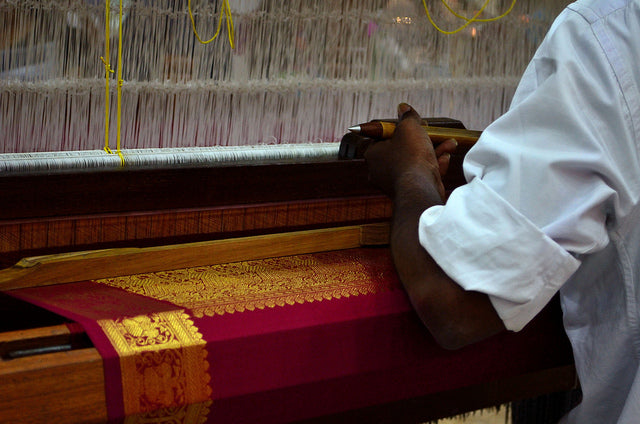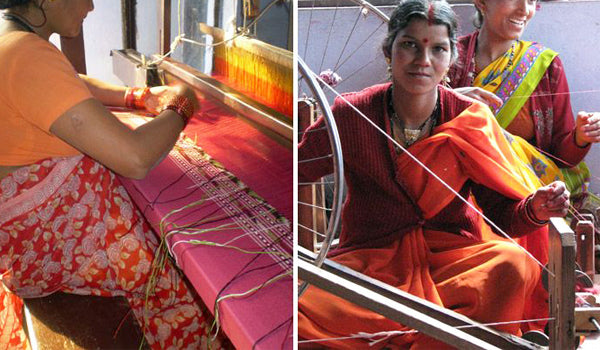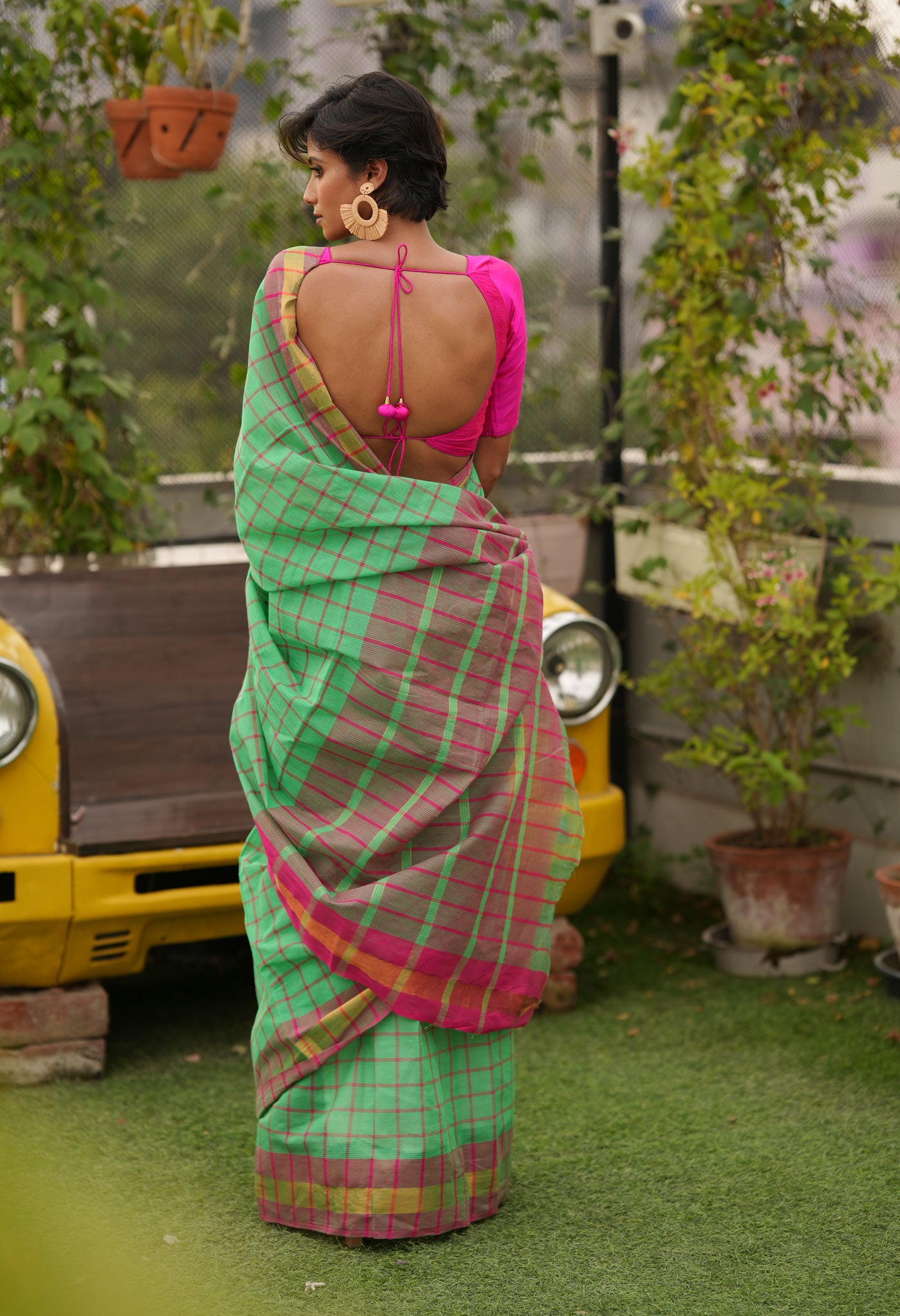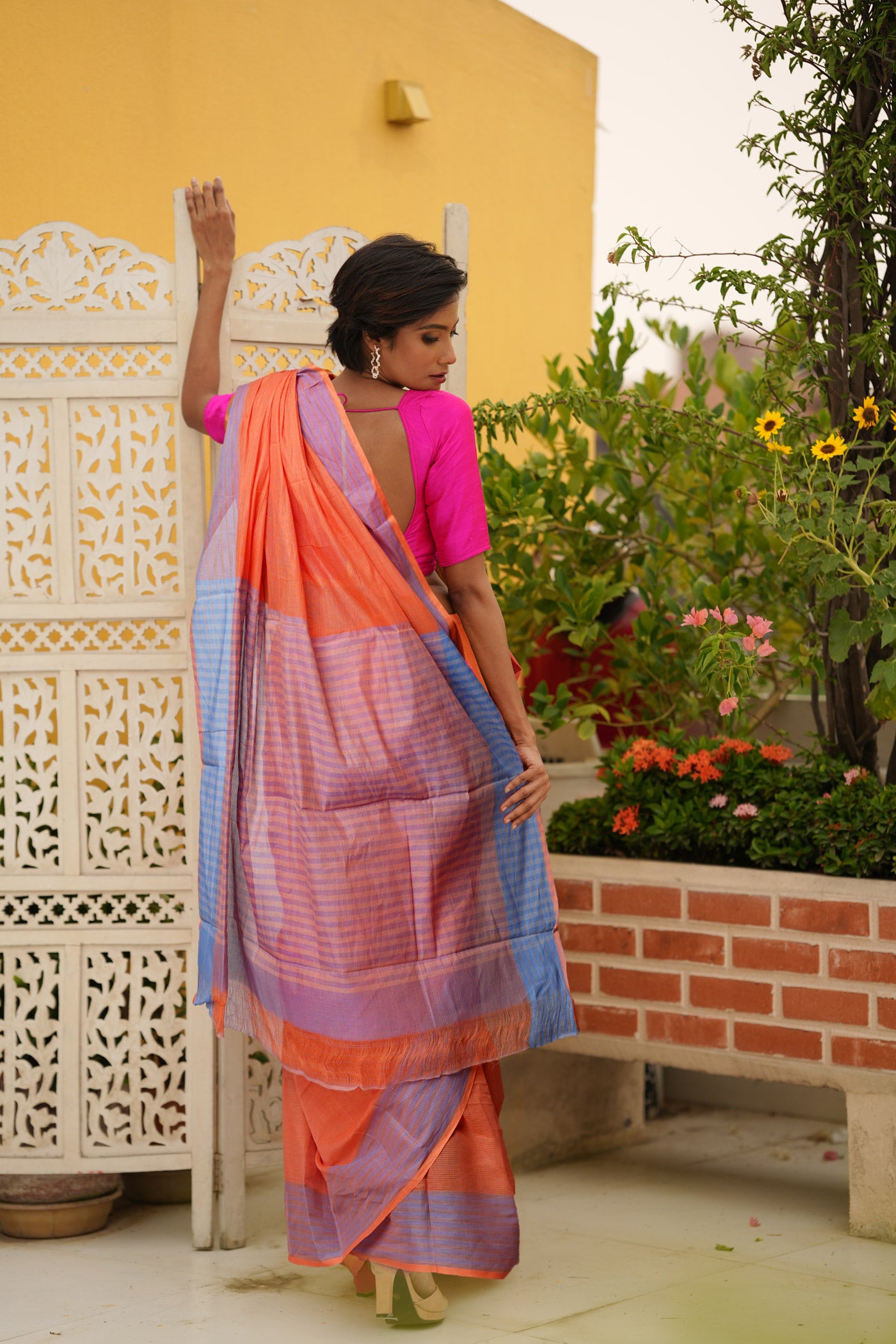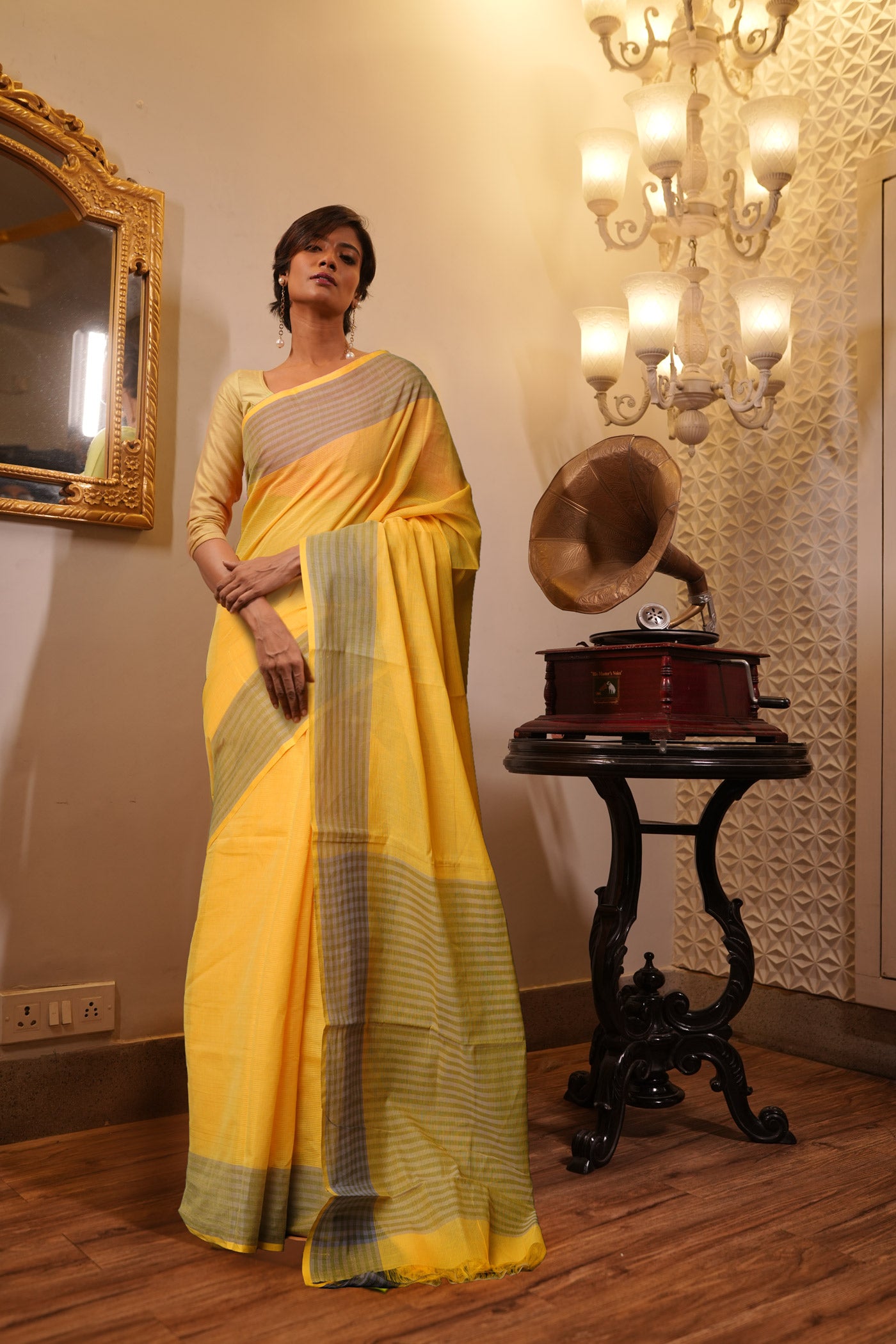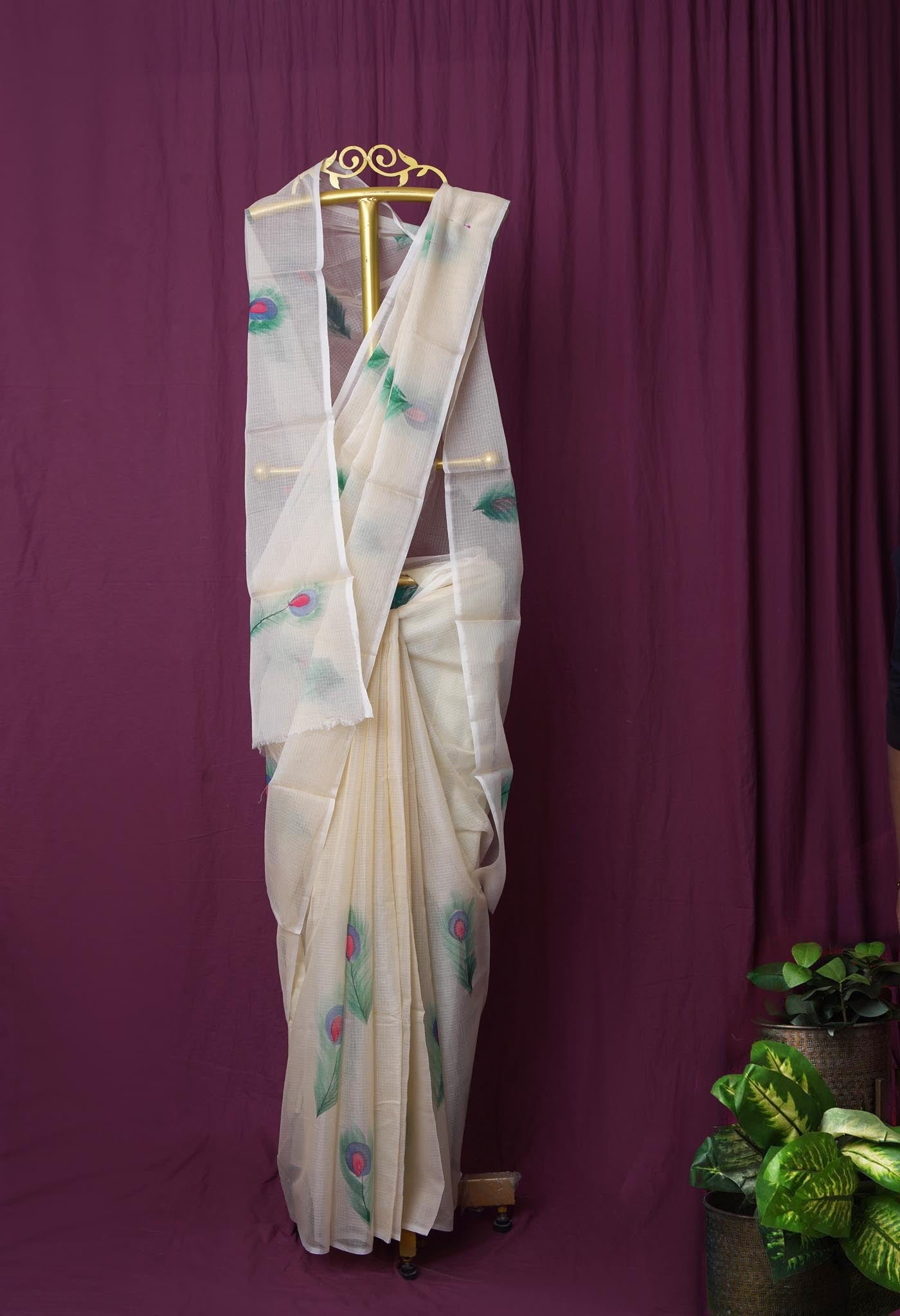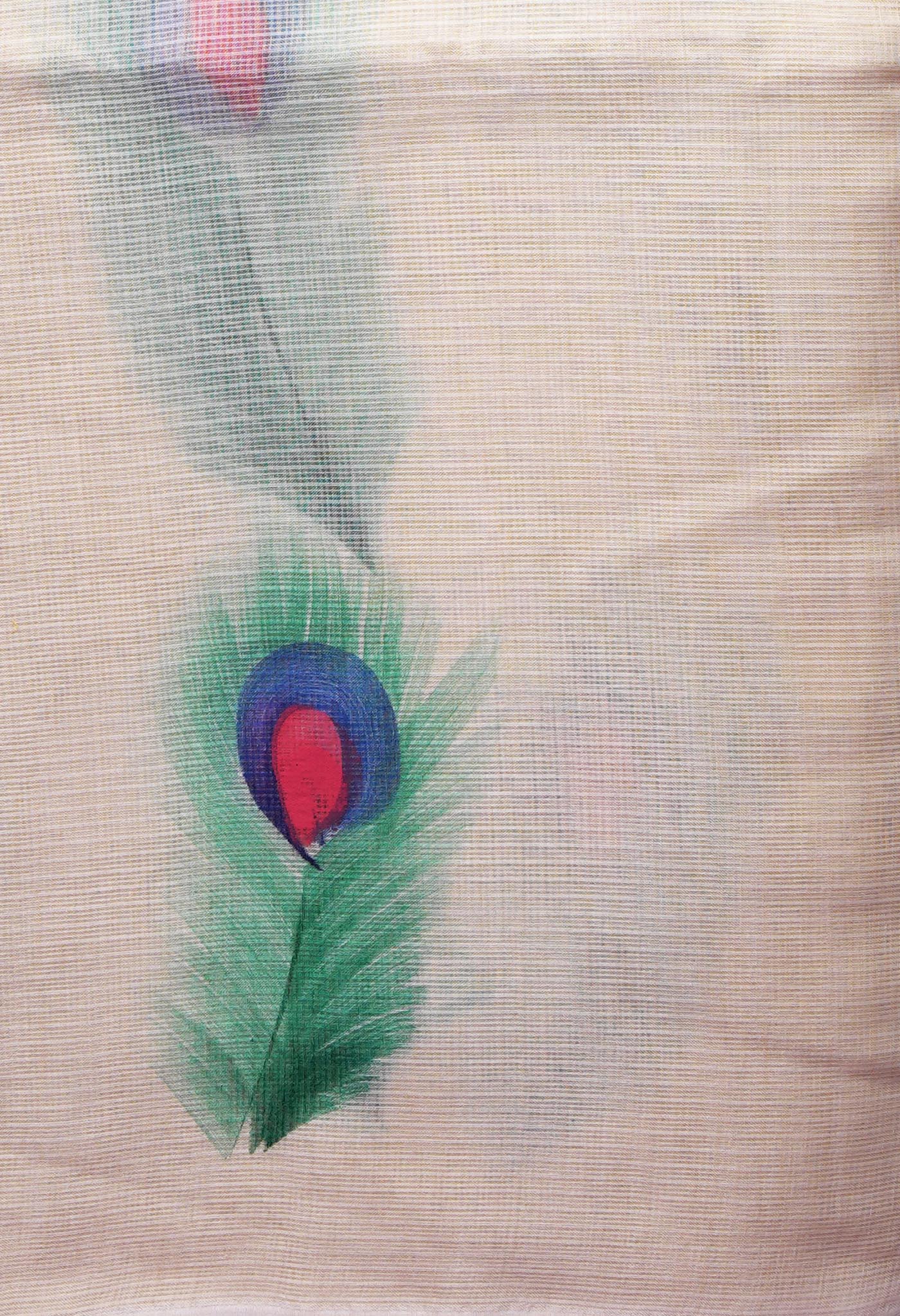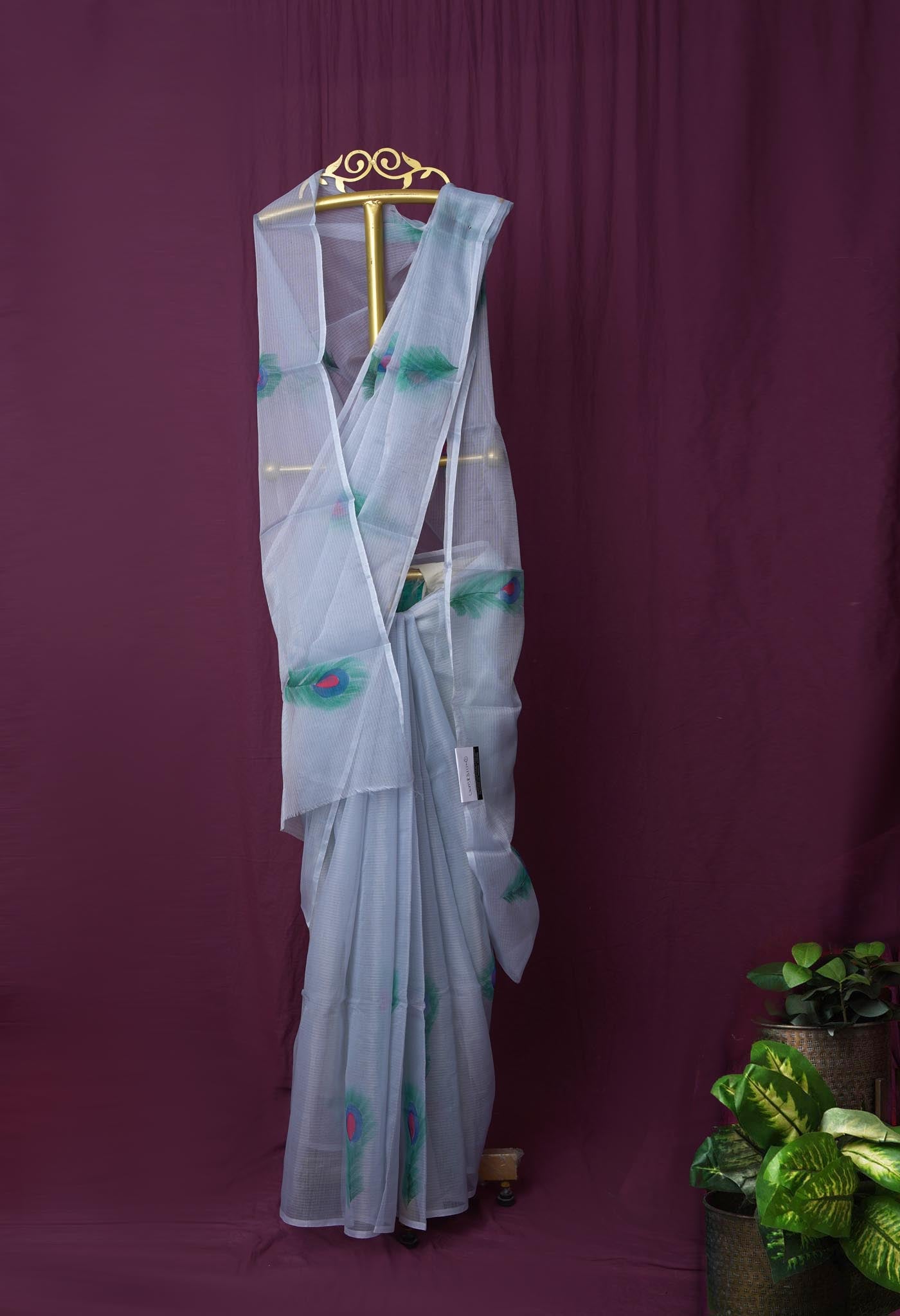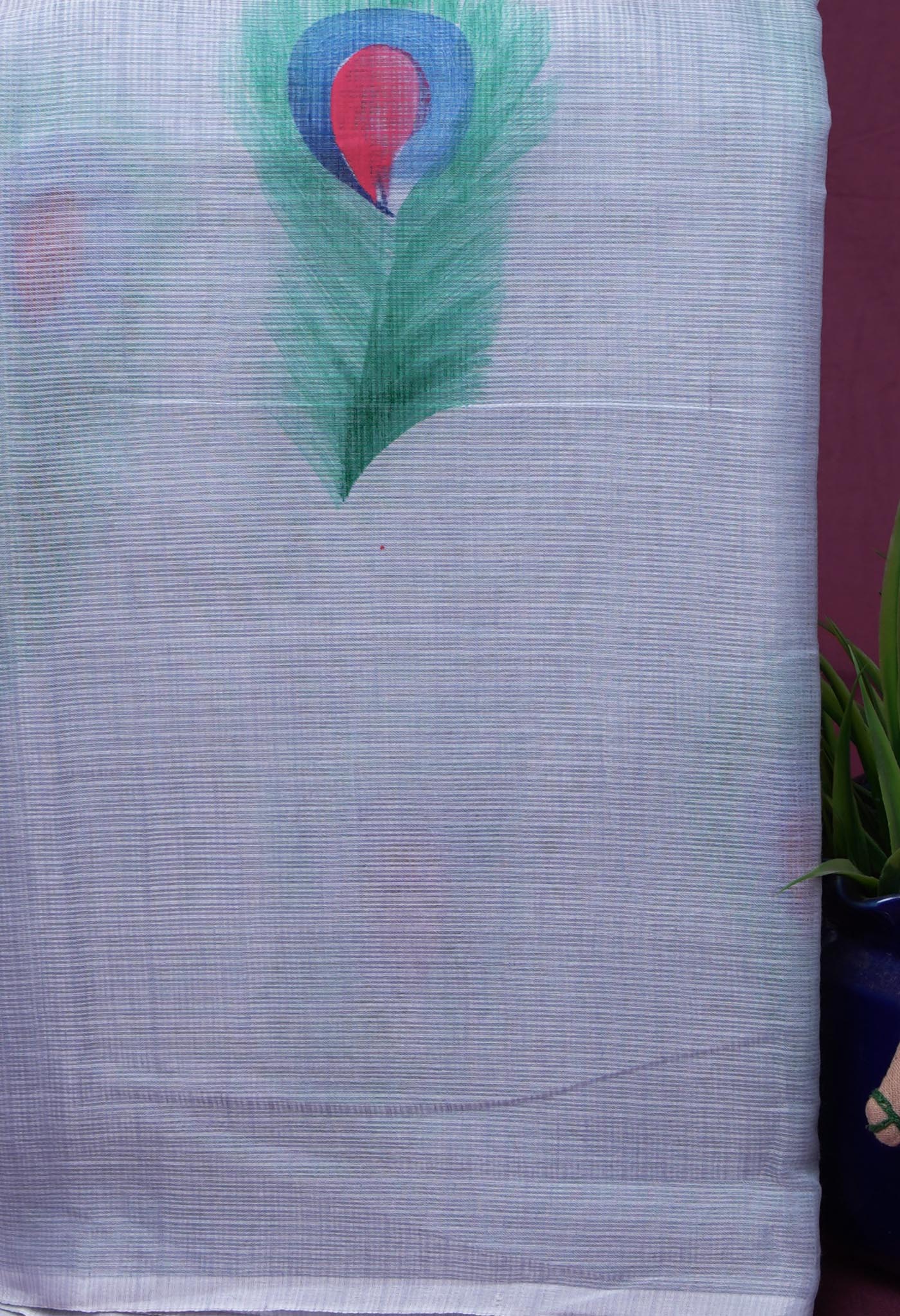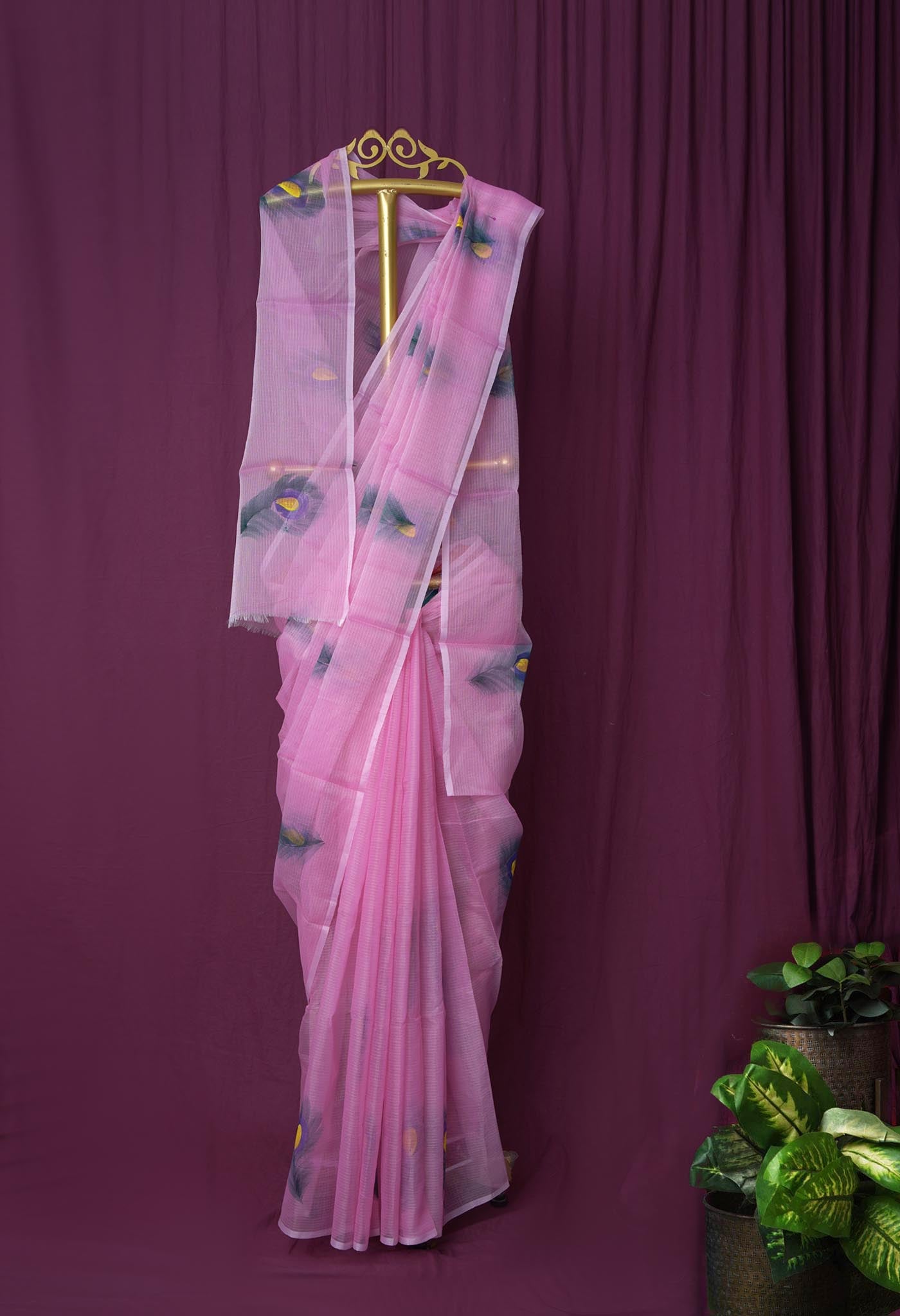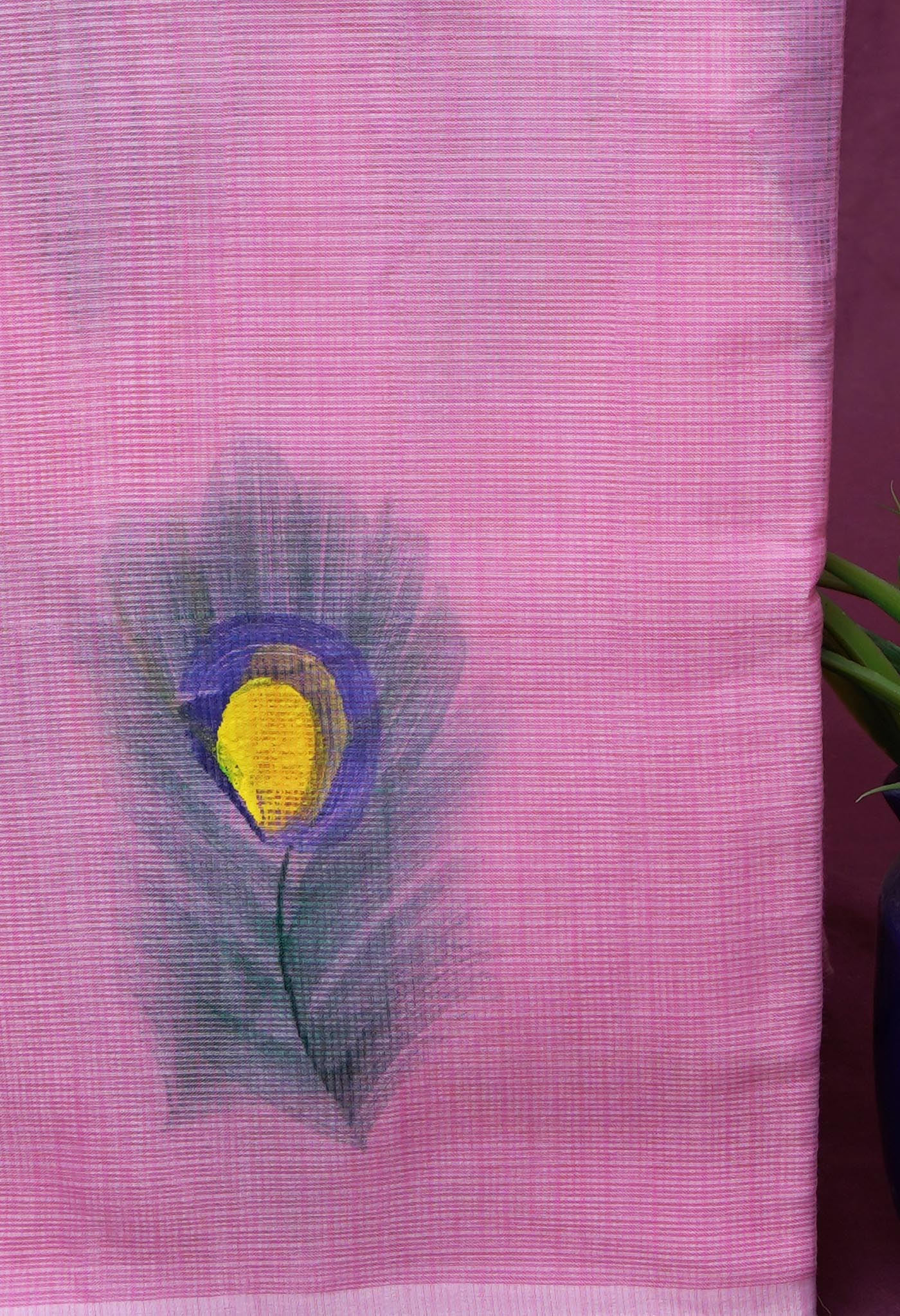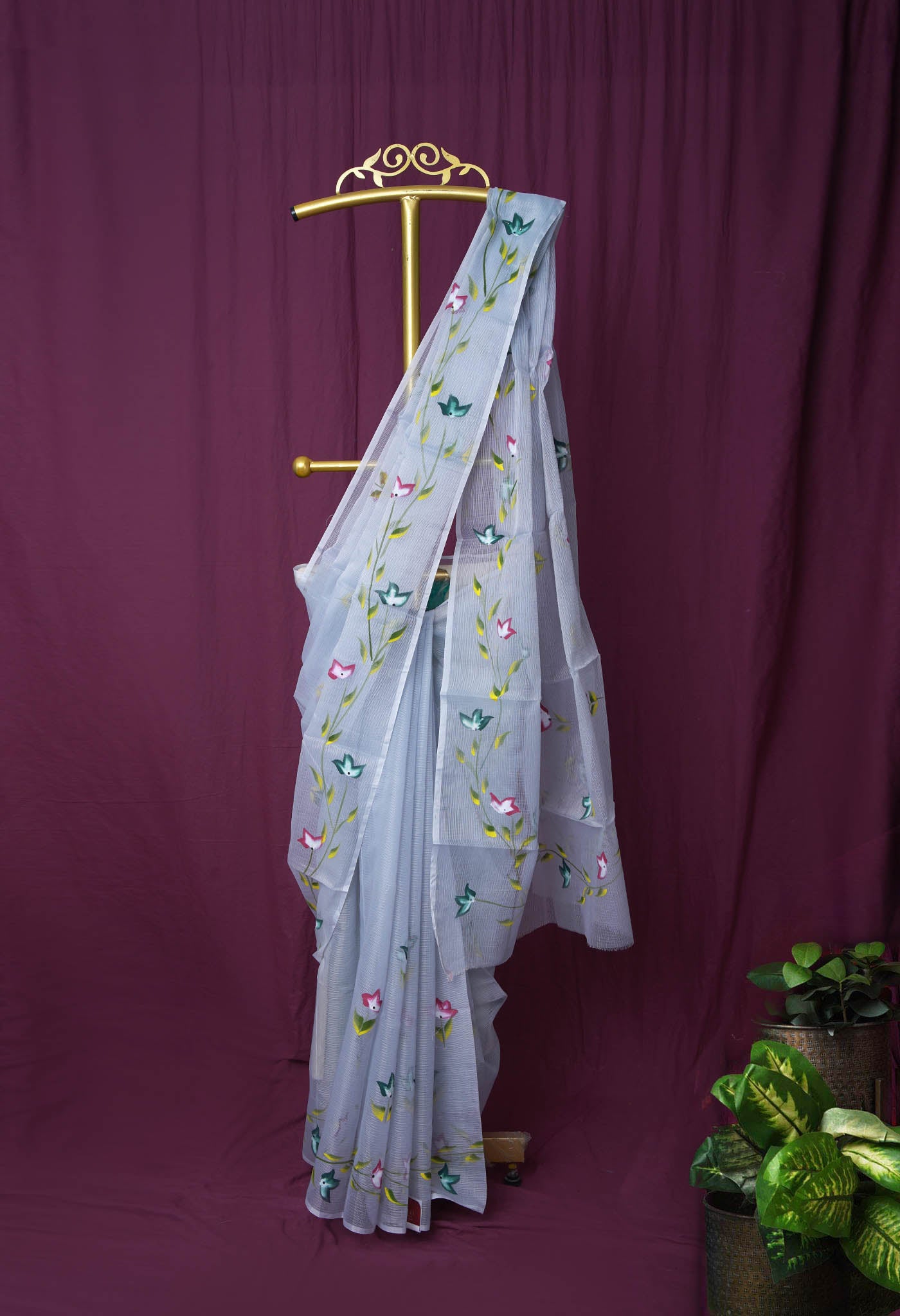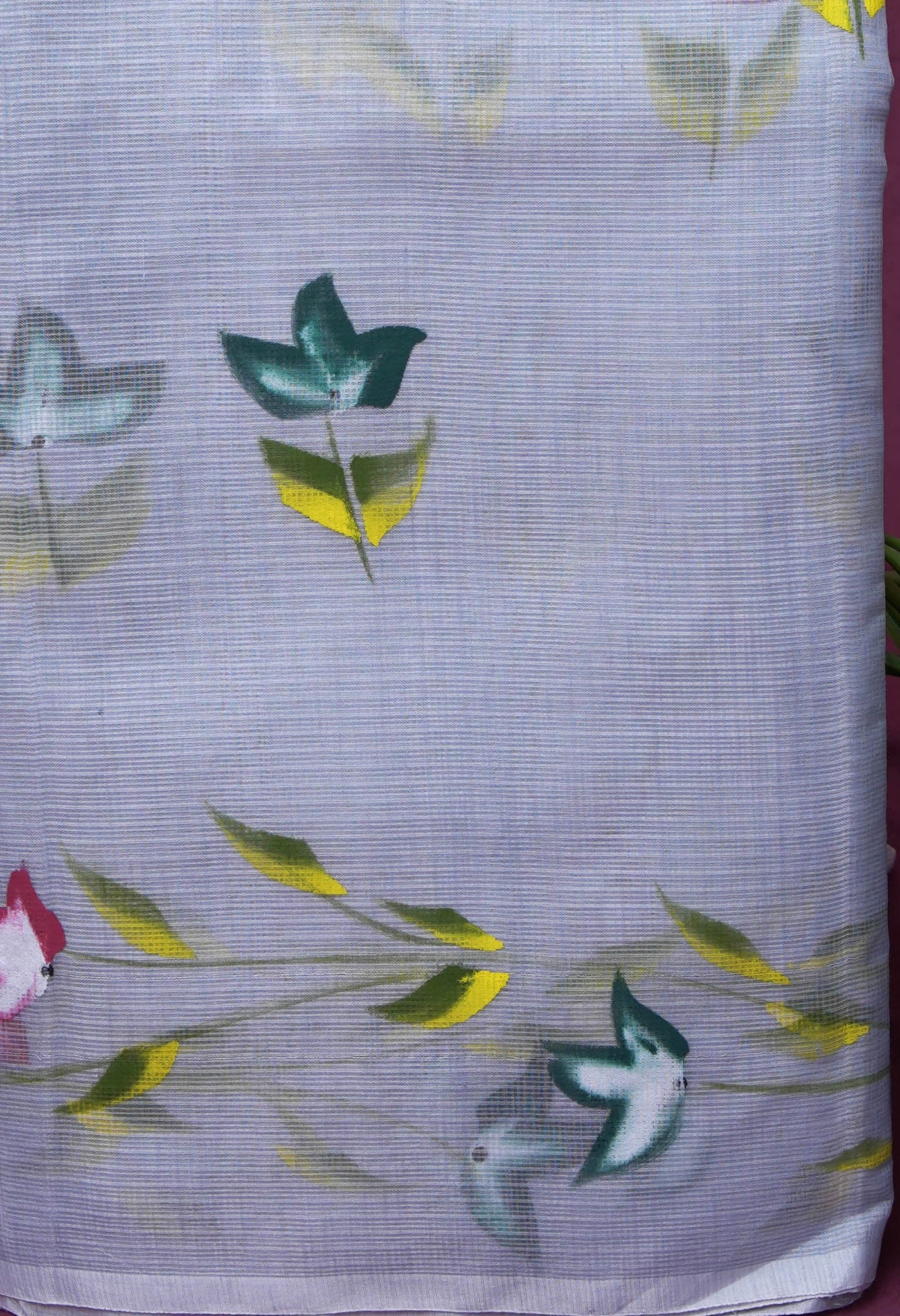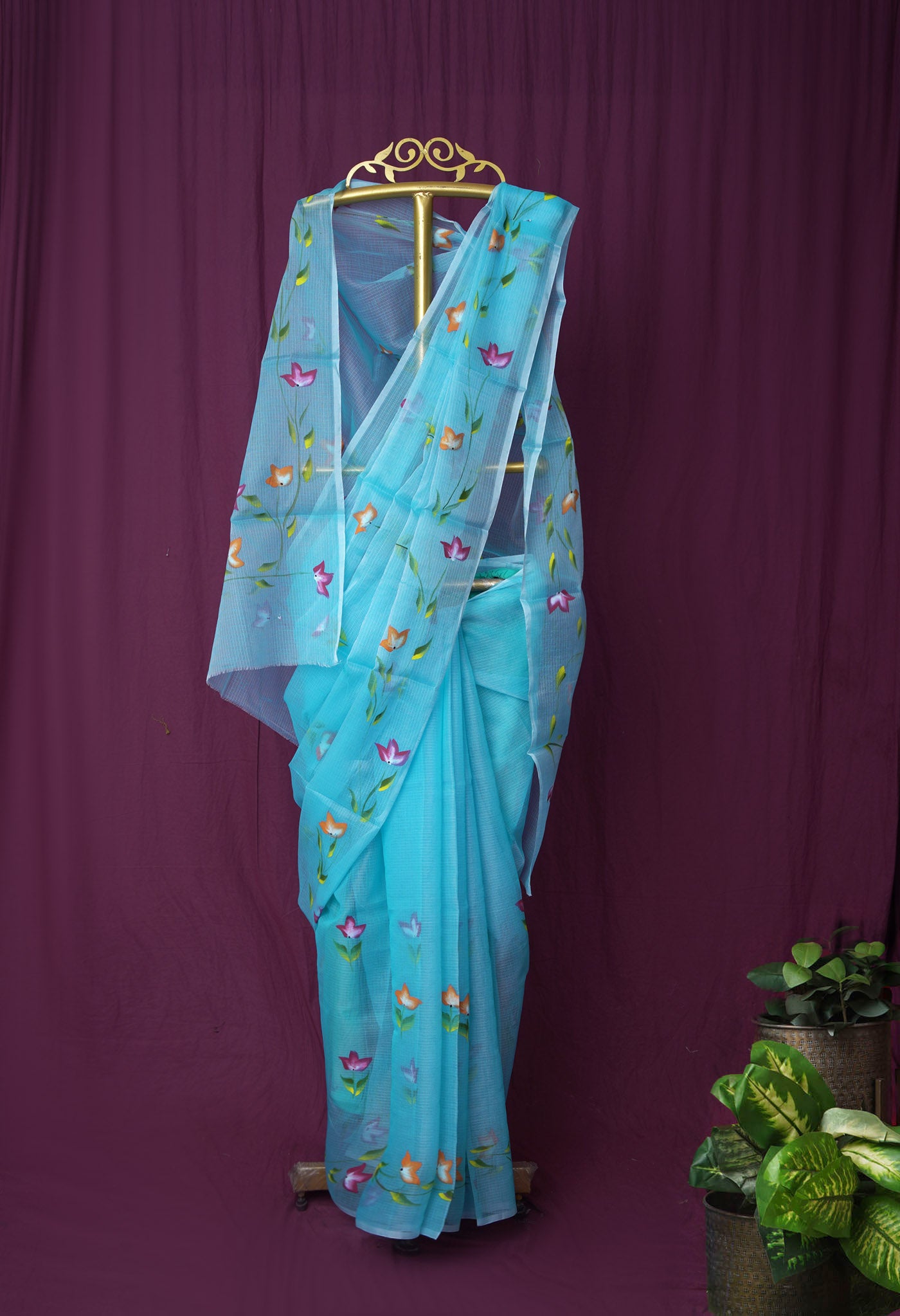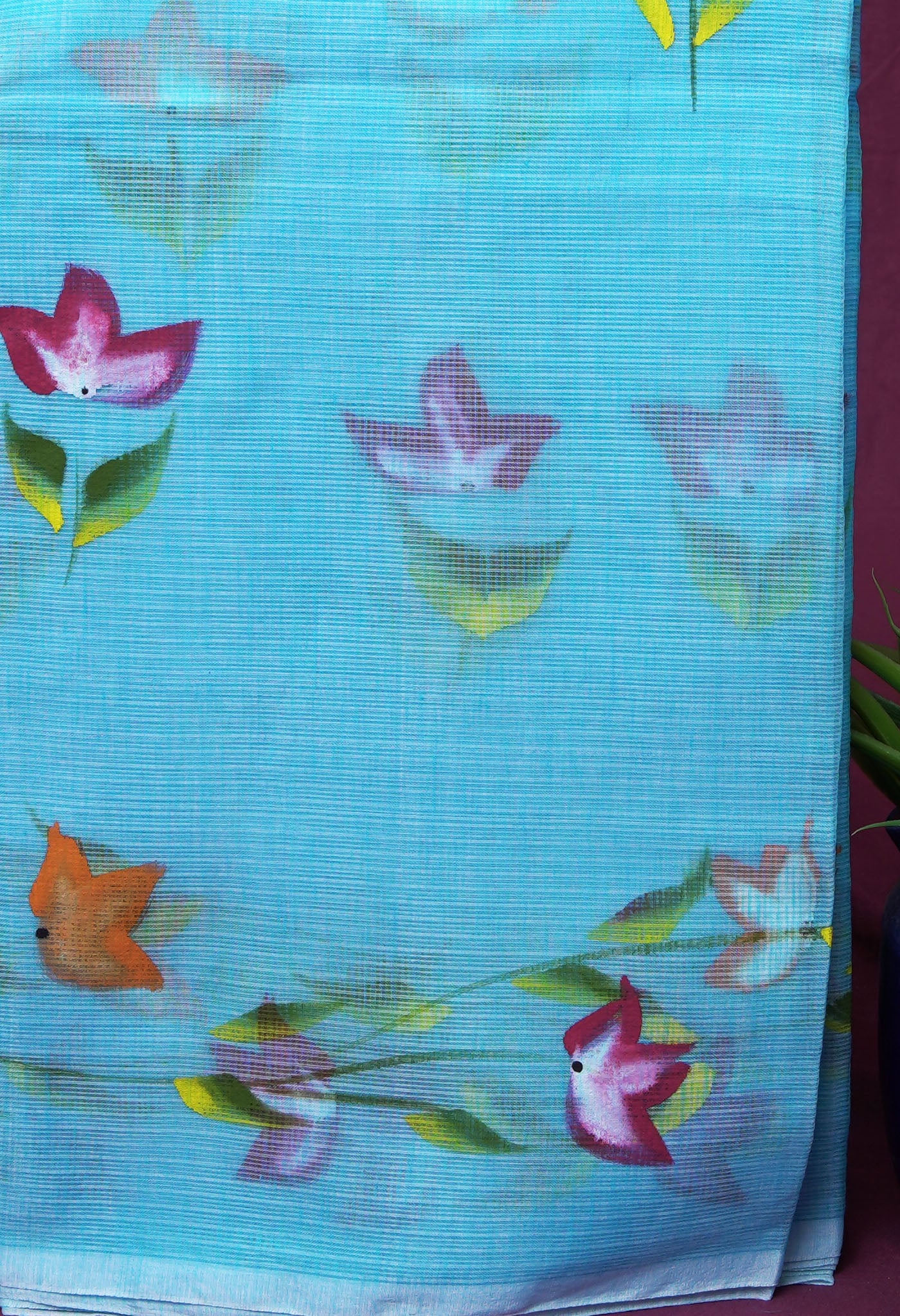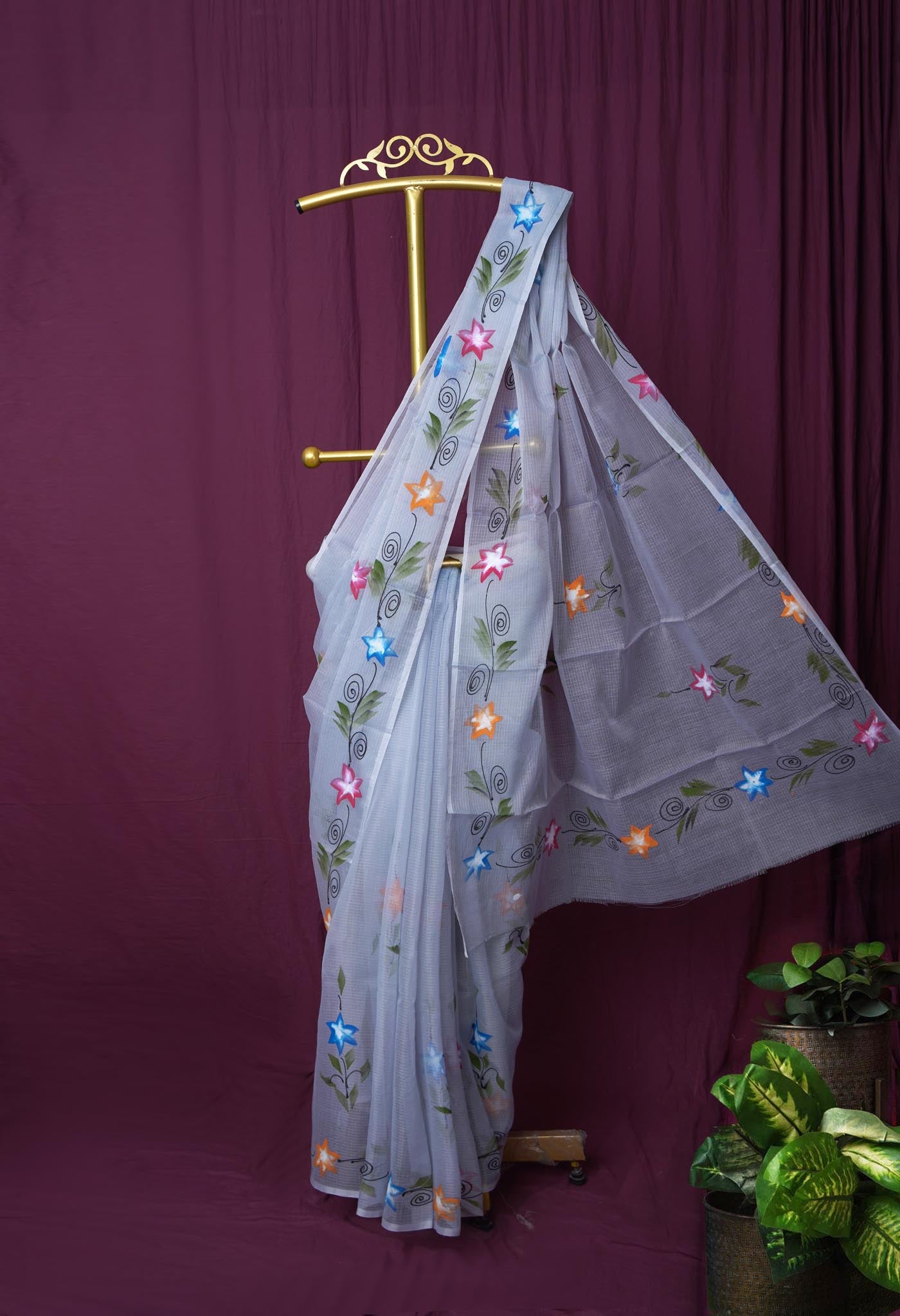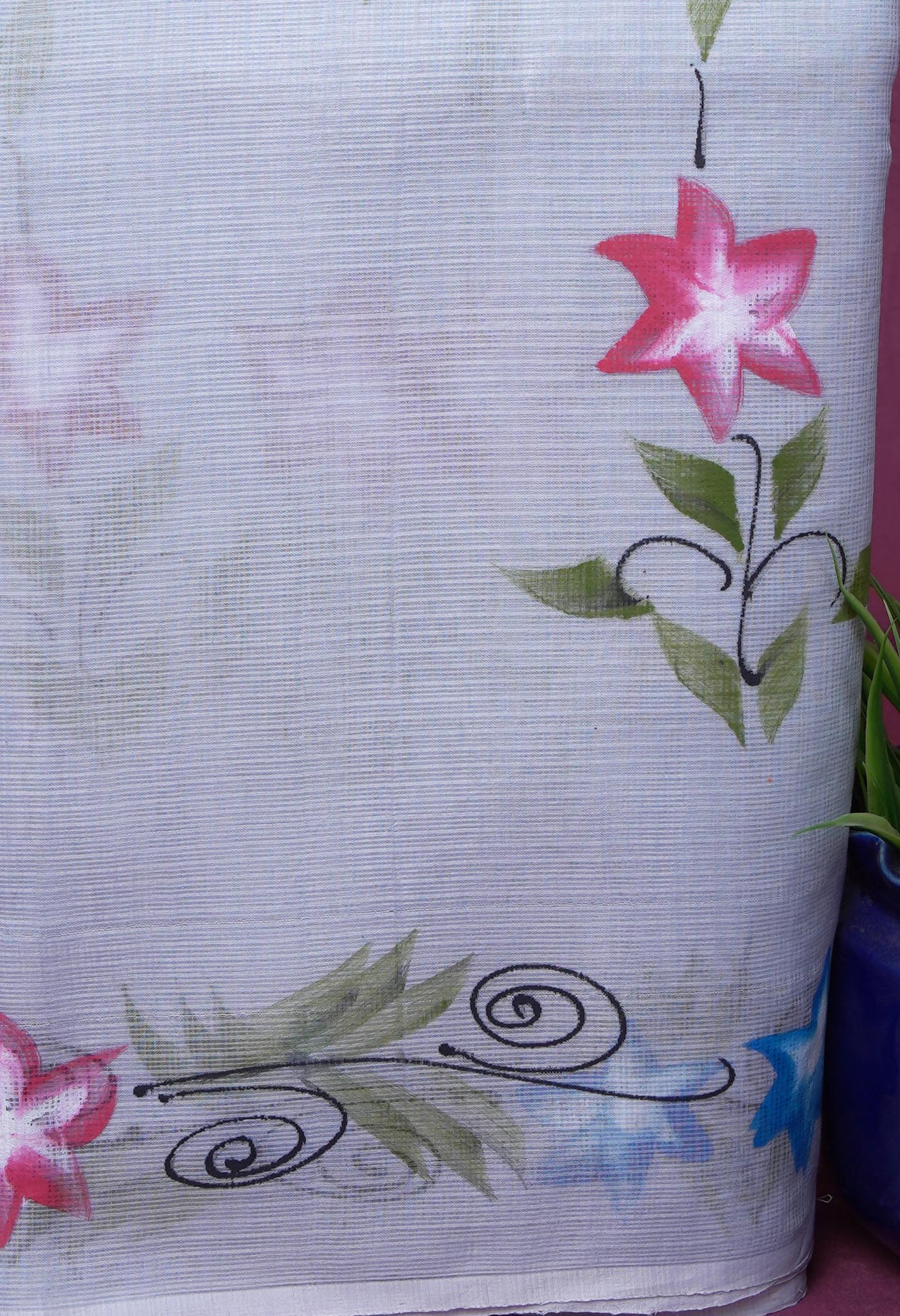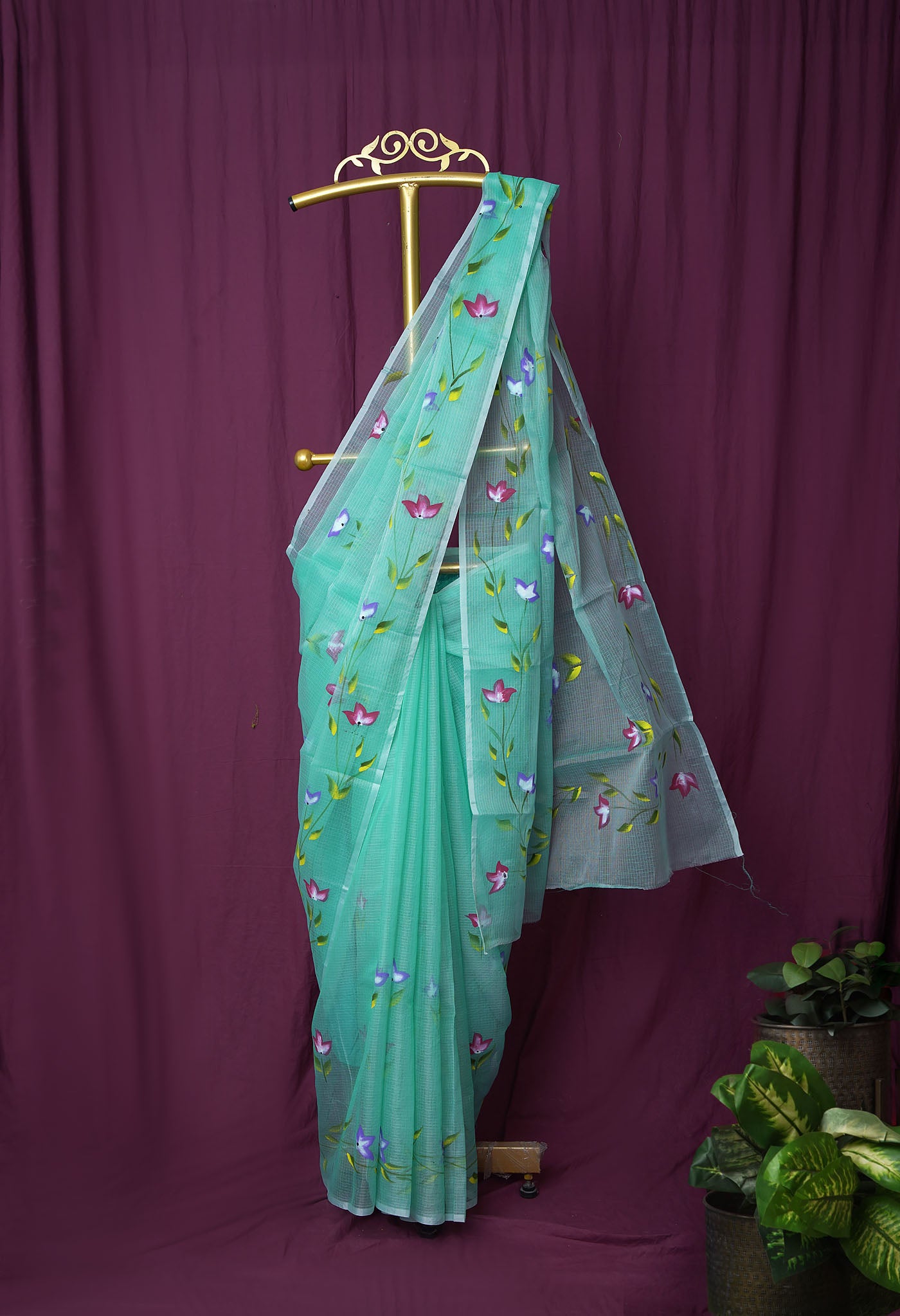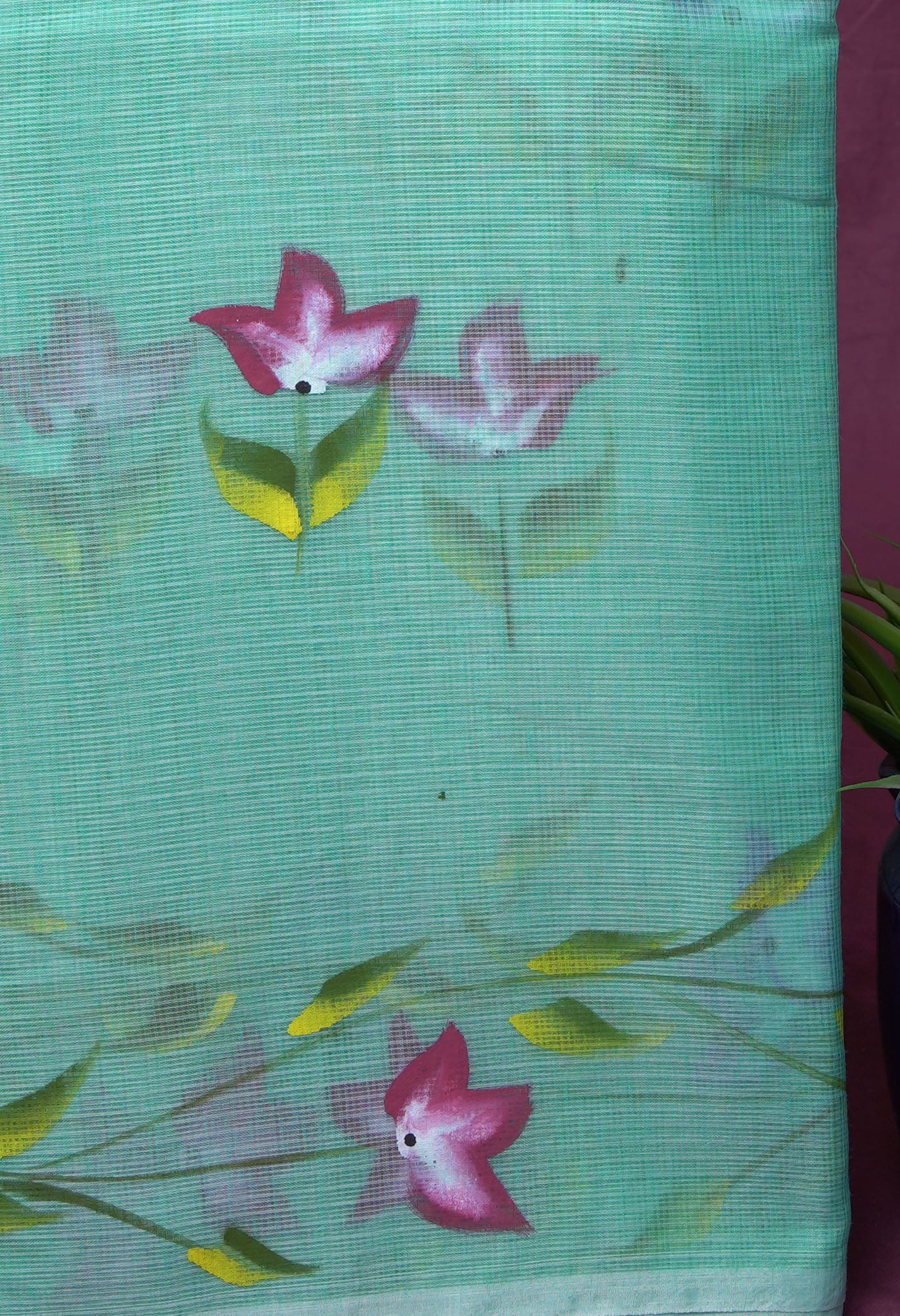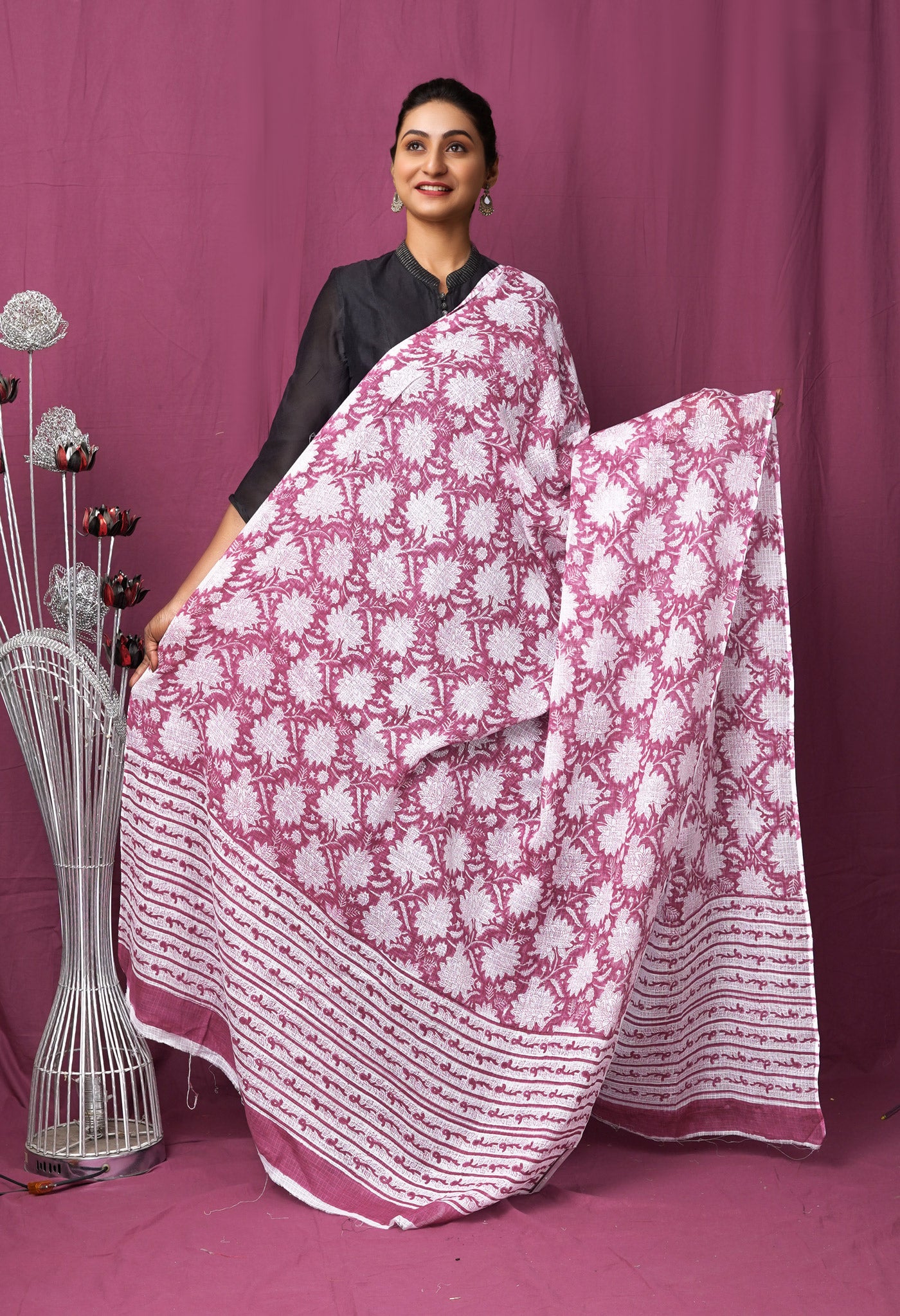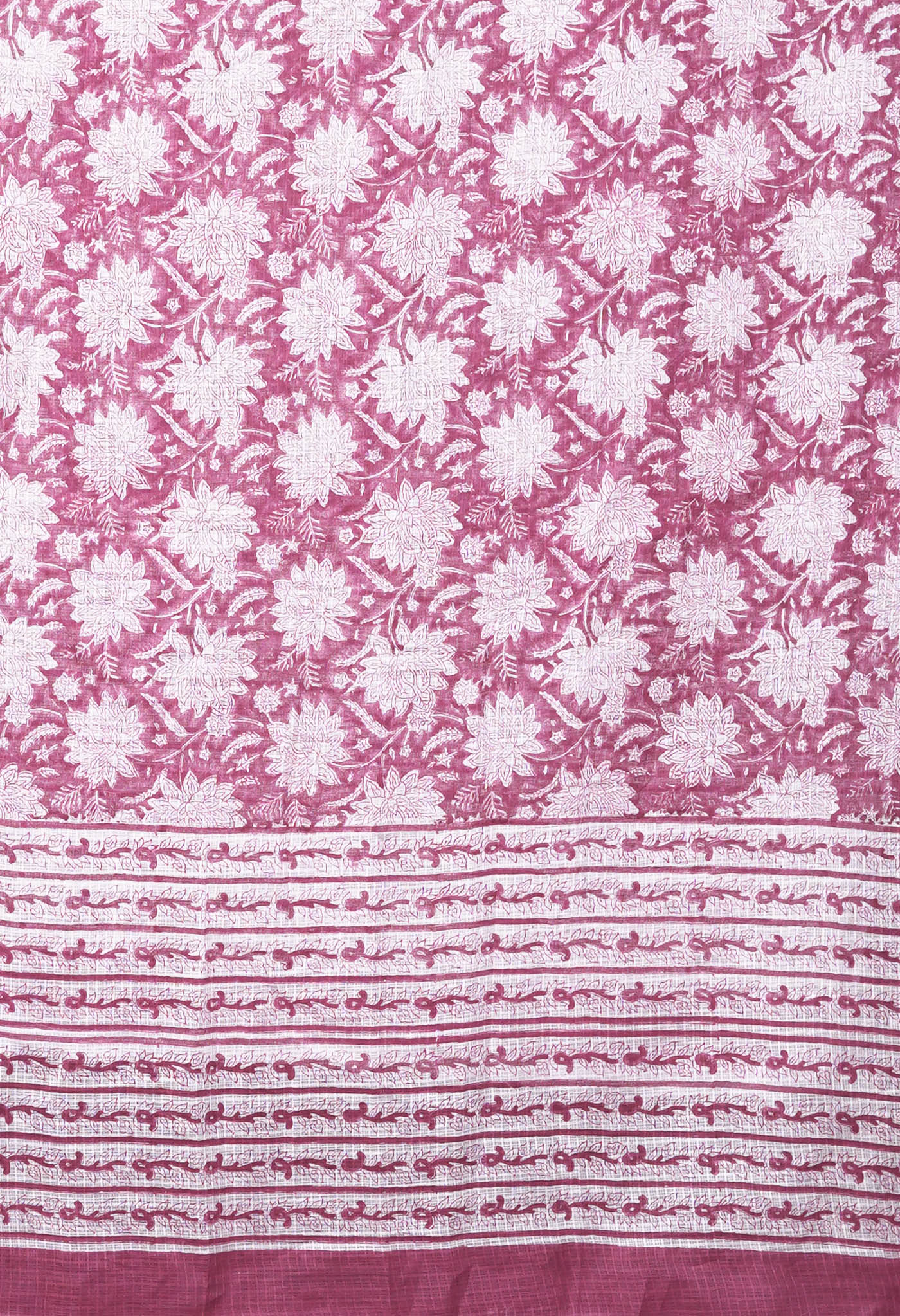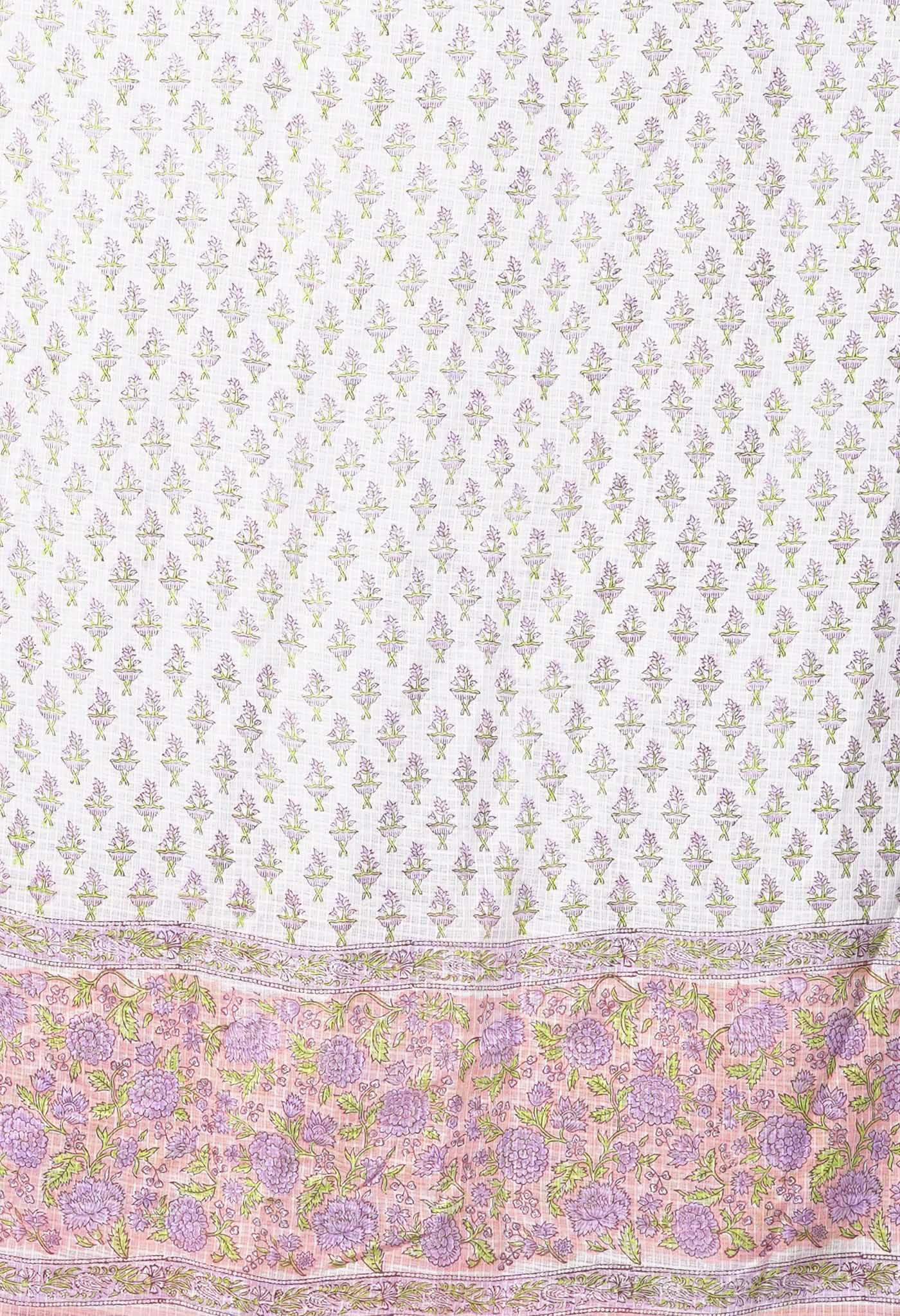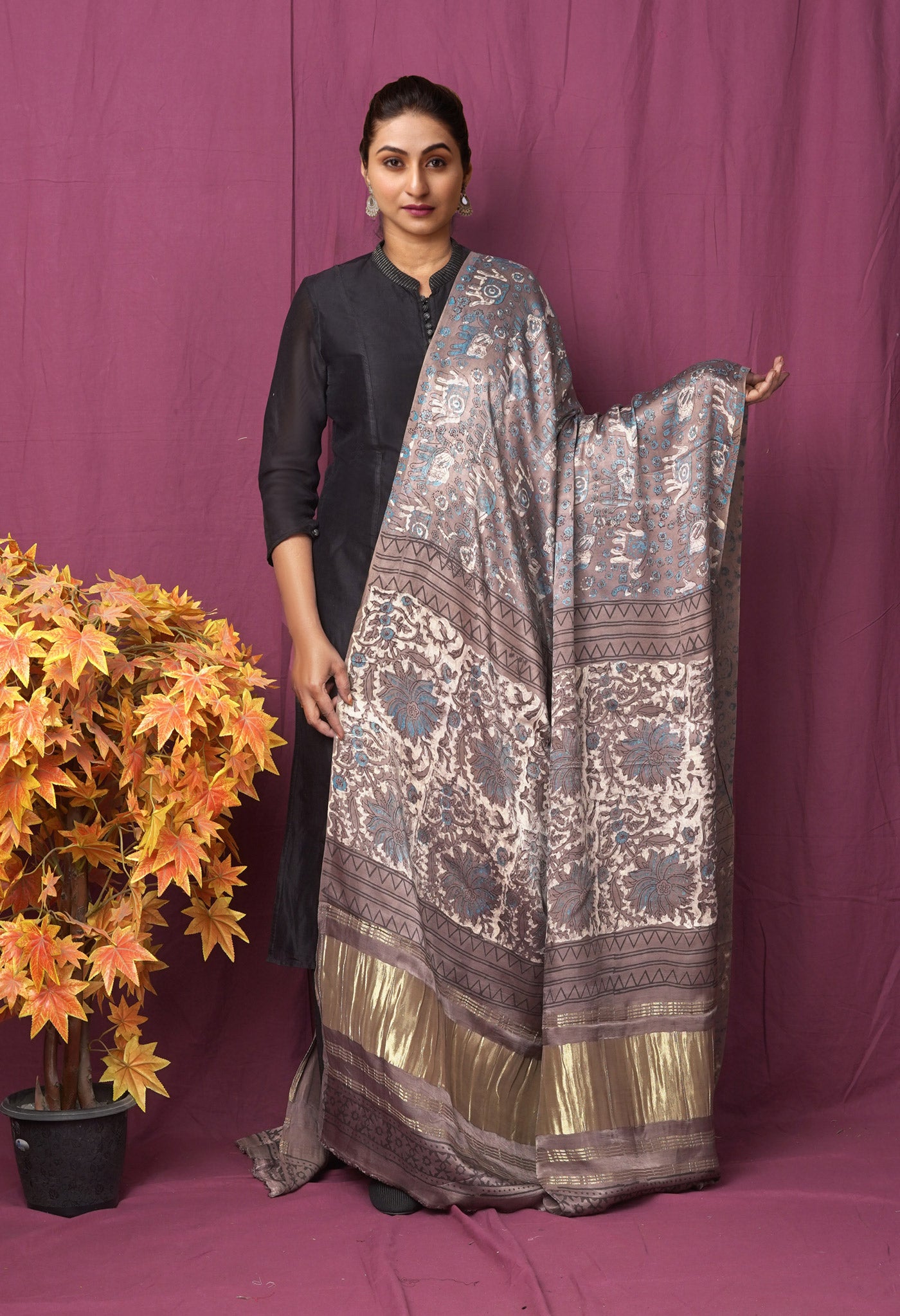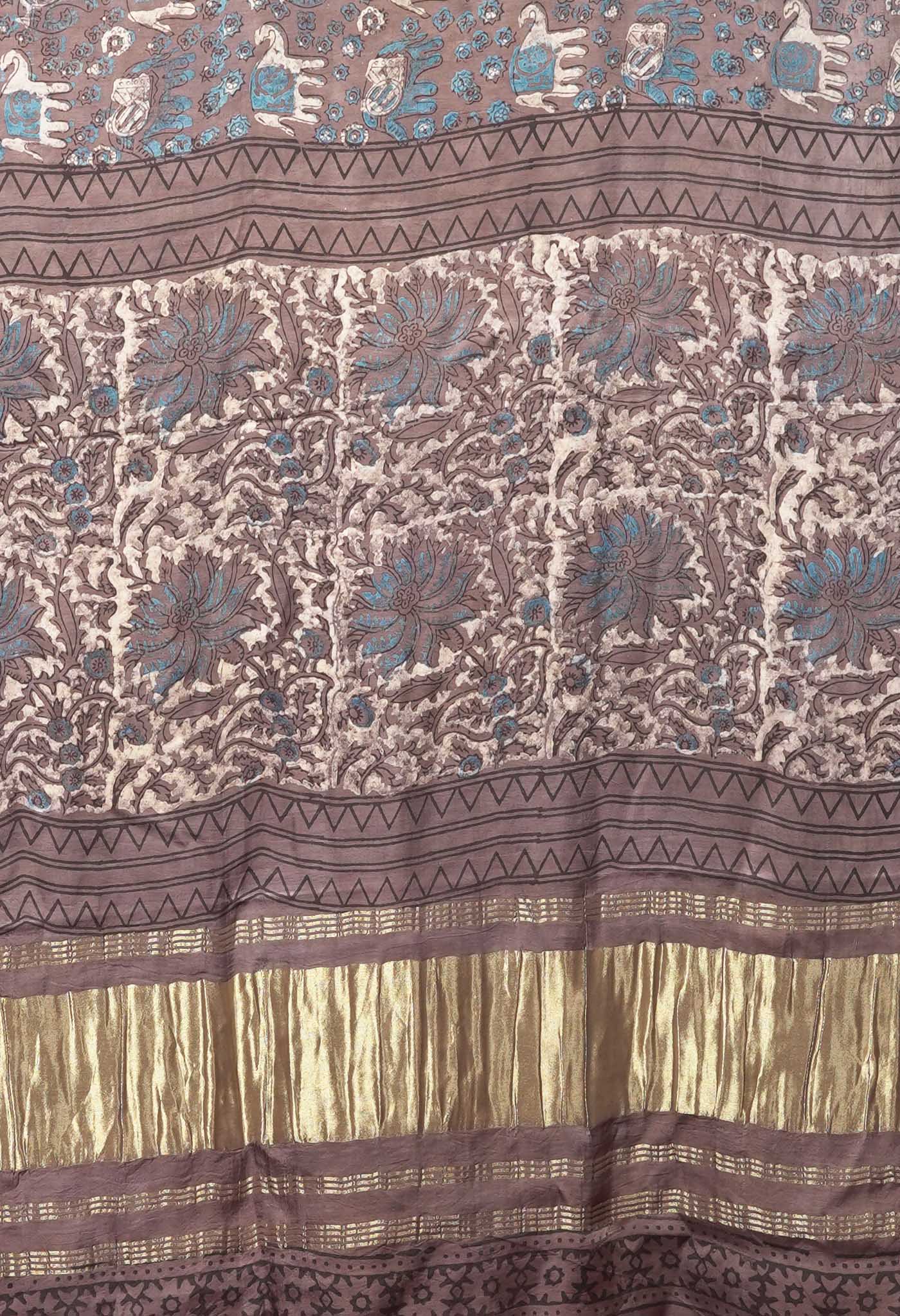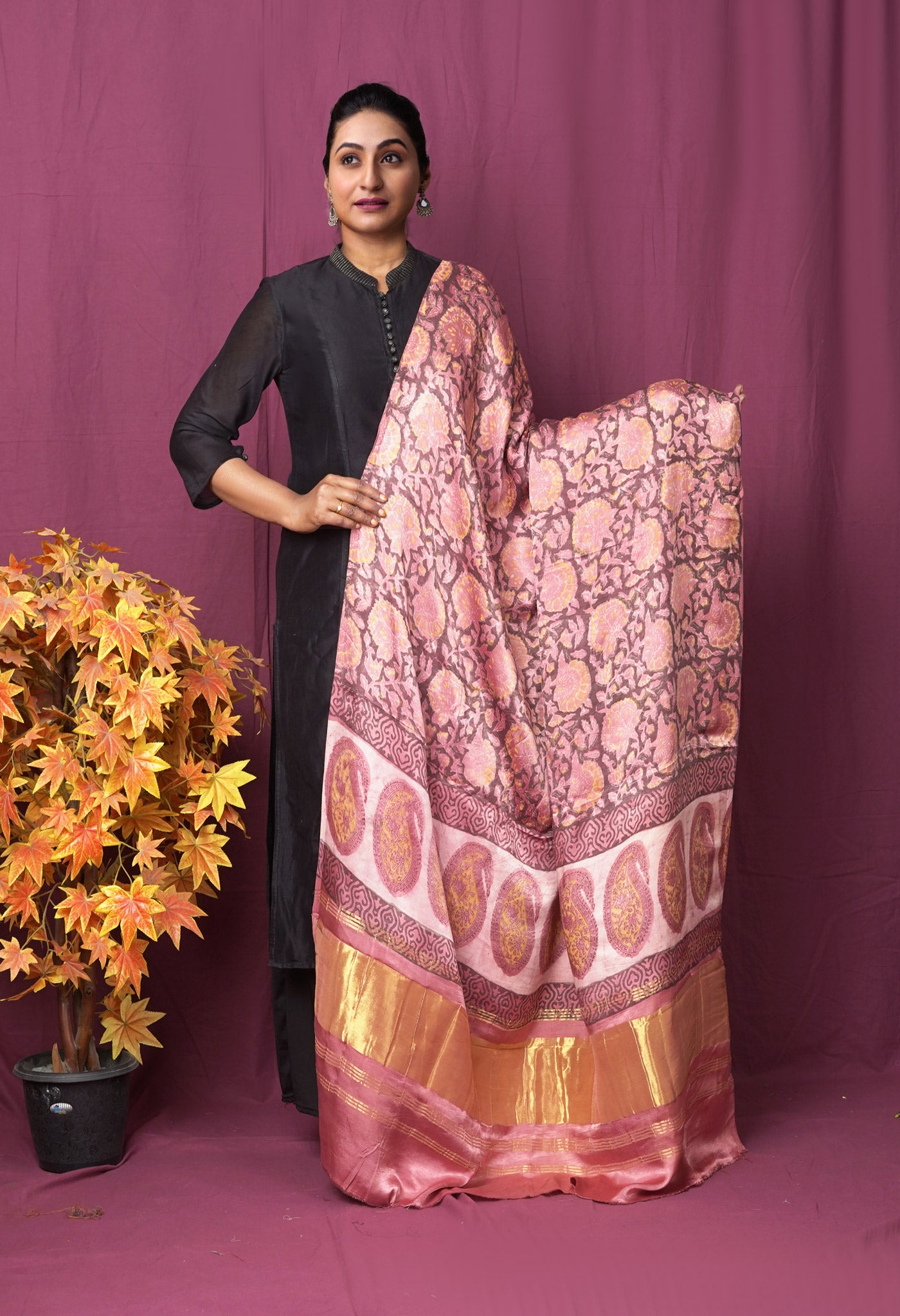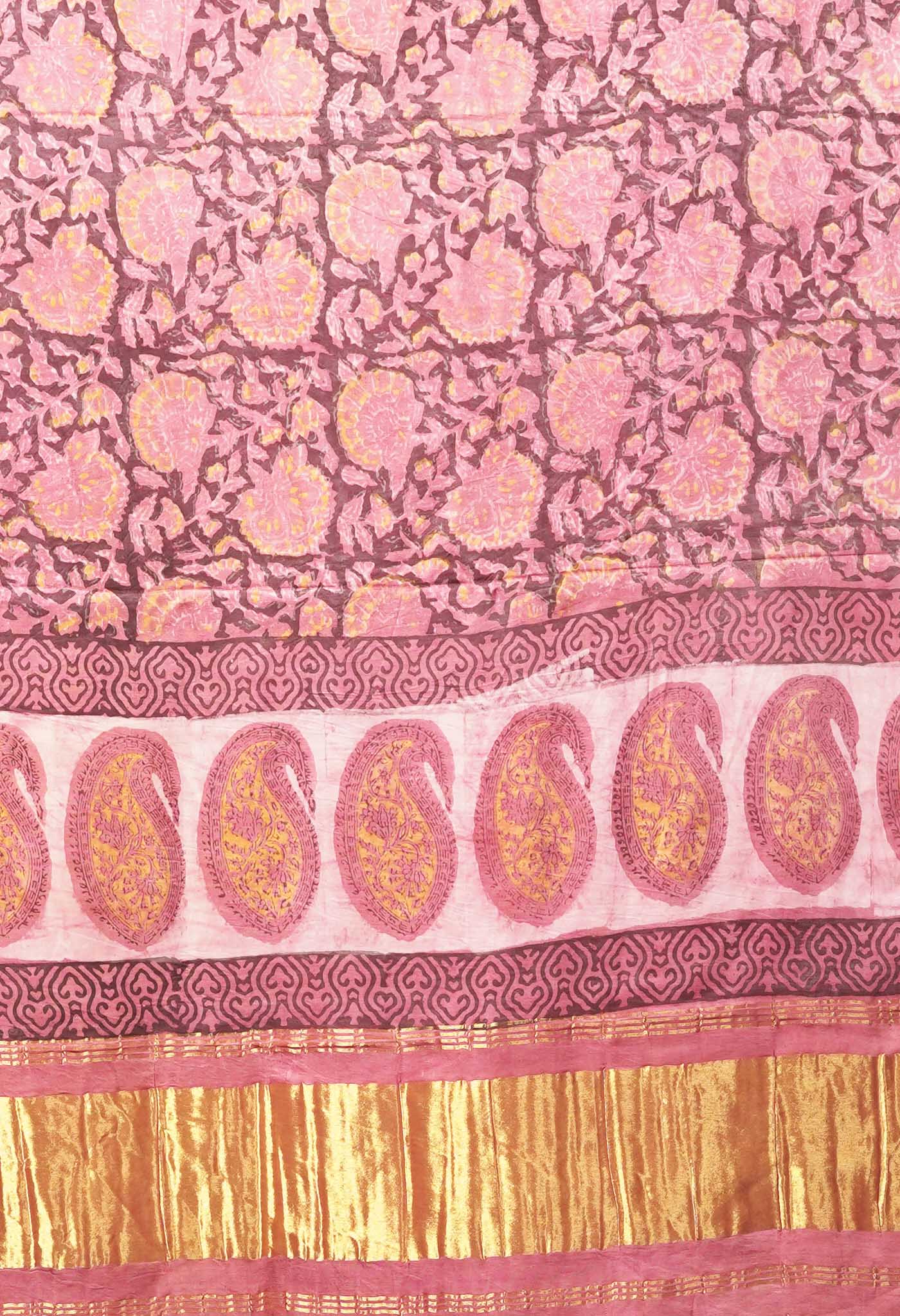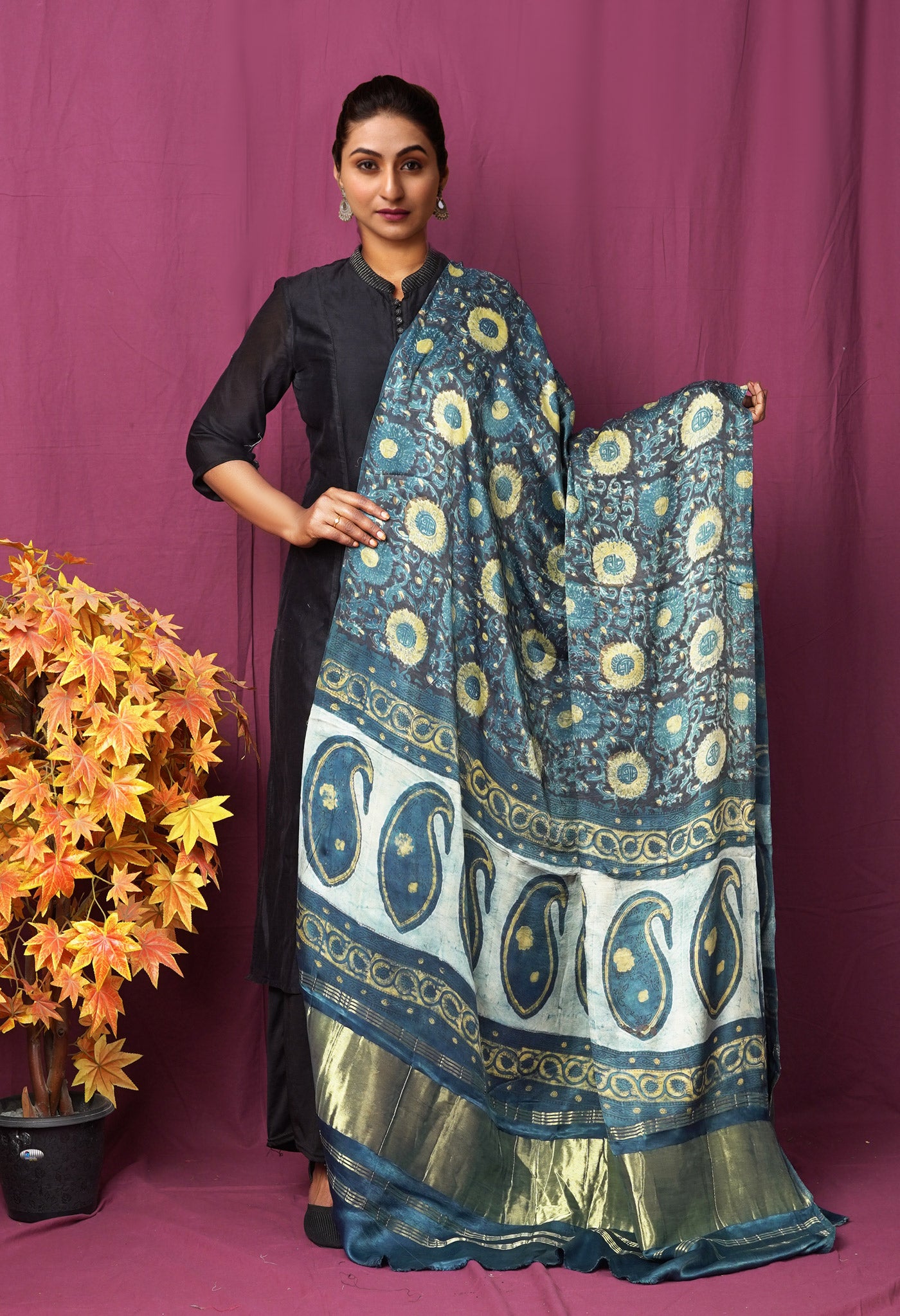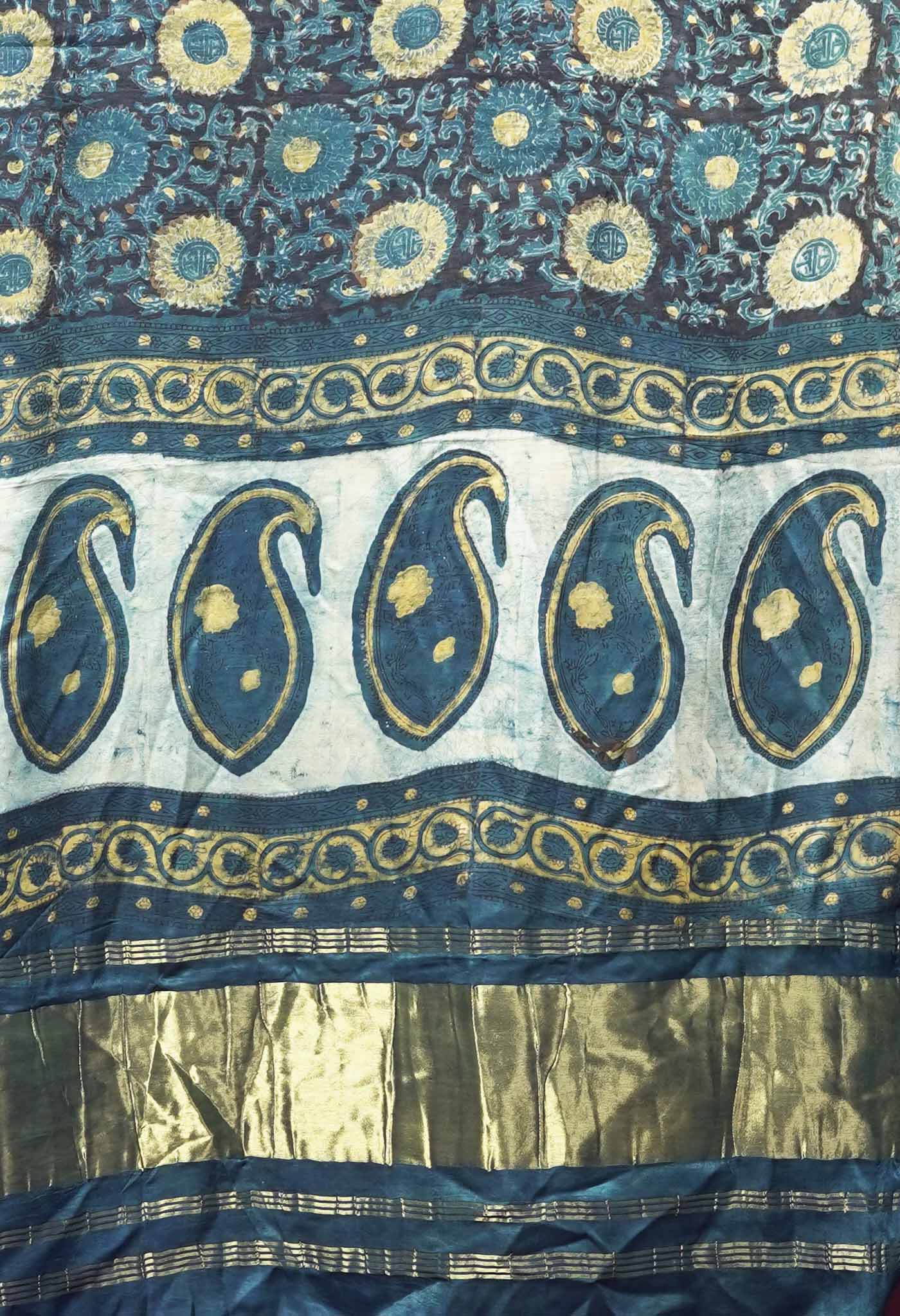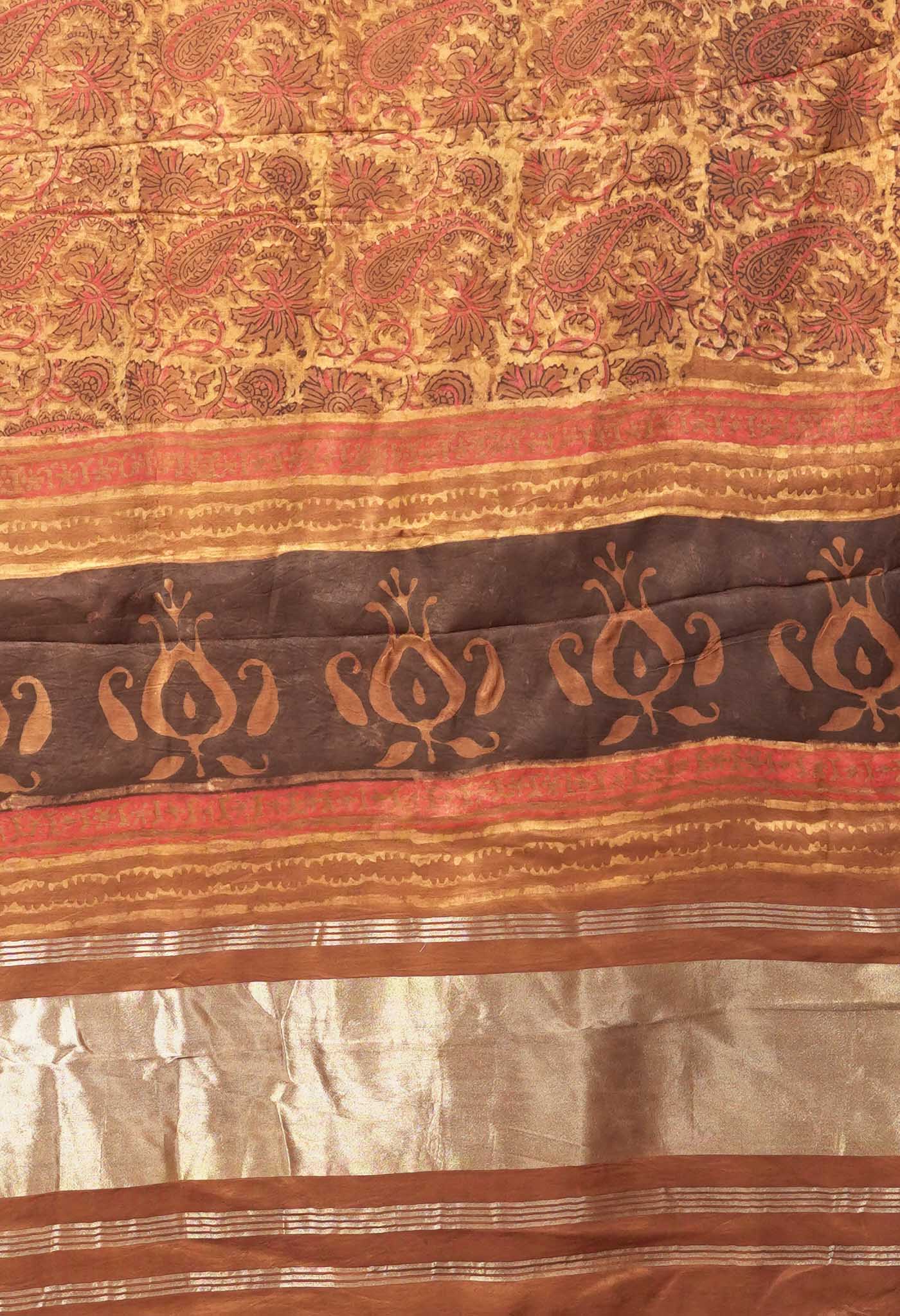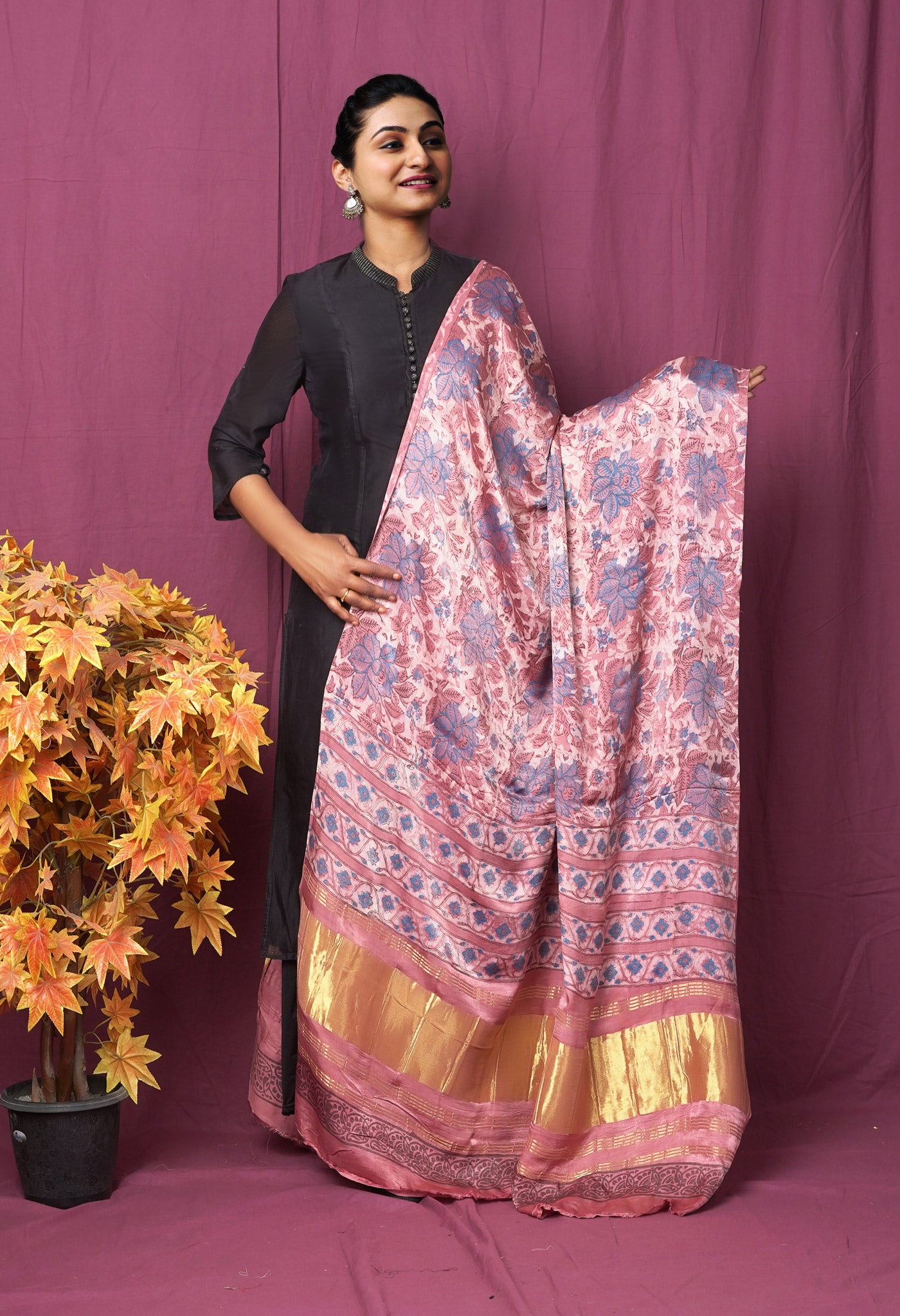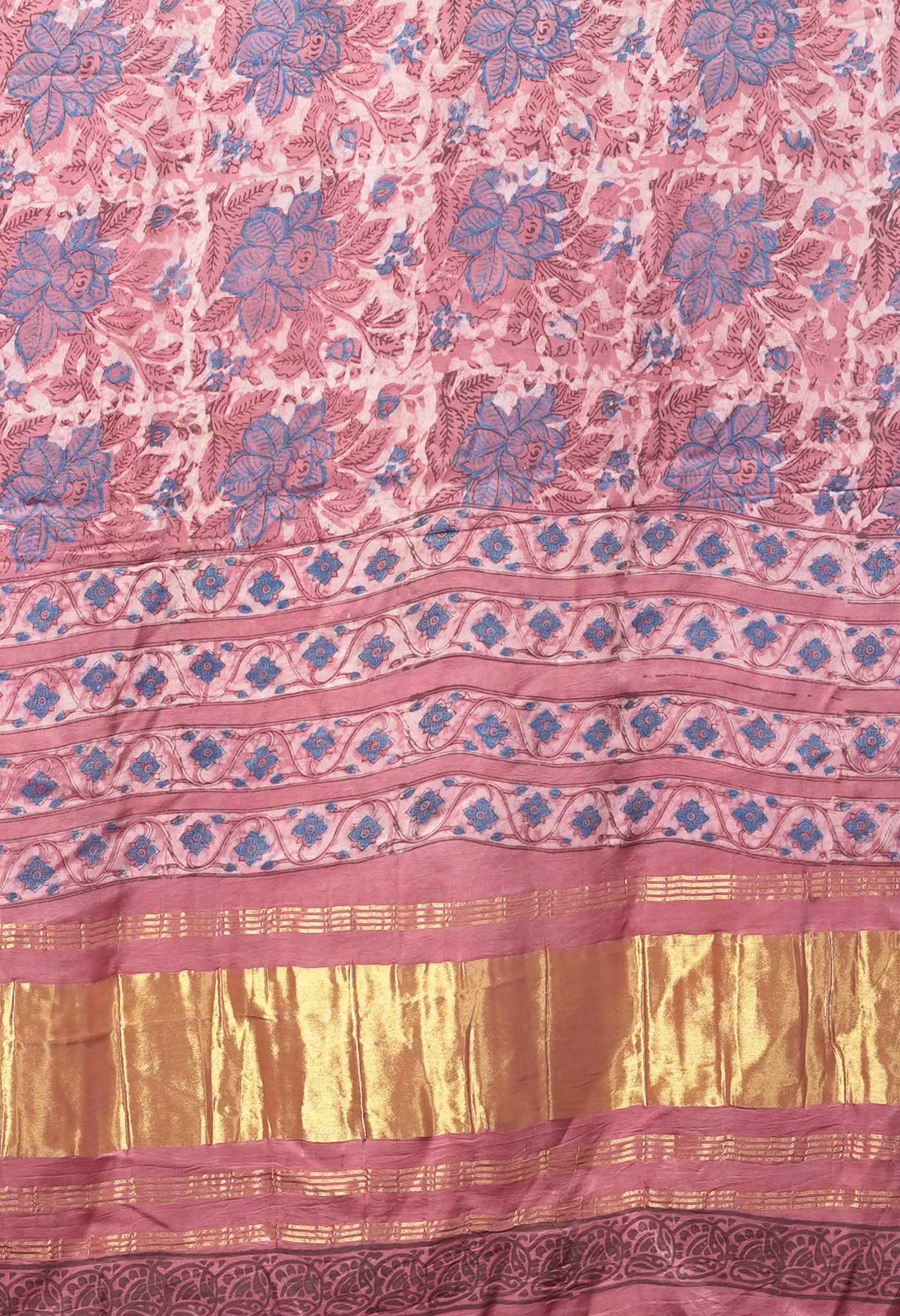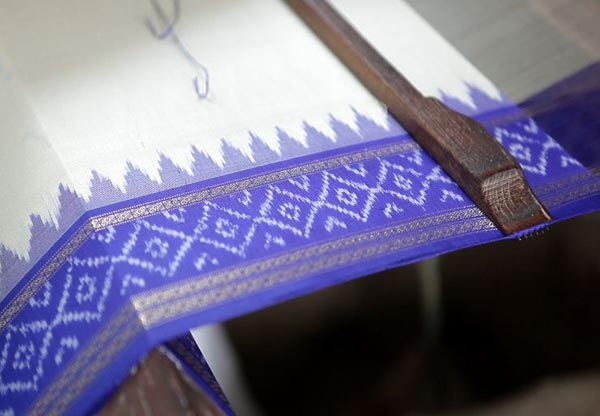
A Ready Recknor of Major Government Handloom Schemes - Explained in a Nut Shell
SCHEME FOR CENTRAL ASSITANCE TO STATE GOVERNMENTS/UNION TERRITORIES FOR SETTING UP OF ENFORCEMENT MACHINERY
One of the schemes meant for implementation for the benefit of handloom weavers is the assistance from the Central Govt. to State Govts. and Union Territories in setting up enforcement machinery to ensure that power loom and mill sectors do not violate the provisions of the Handlooms (Reservation of Articles for Production) Act, 1985.

The Centre shall:
- Encourage and assist State Govts. and Union Govts. by setting up where necessary, and strengthen the infrastructure where it is already existing, so that implementation of provisions for the benefit of the Handloom sector shall be effective.
This would be in addition to the already in place, Handlooms (Reservation of Articles for Production) Act, 1985 introduced by Central Govt. agencies namely the Development Commissioner for Handlooms and the Textile Commissioner.
- Based on some conditions, be setting up office and providing for the financial part of Recurring and Non-recurring expenditure also for the purpose.
Certain salient features of the scheme are as below:
Setting up of the scheme would entail
- the State or Union Territory would have 5000 or more power looms operating within it.
- there would be a Central Office and headed appropriately, with subsidiary offices under its control. Each subsidiary office would be covering at least 20000 power looms in its area of jurisdiction.
- Staffing would be based on the requirements of the provided infrastructure.
- The funding thereby in terms of recurring and non-recurring expenditure would also be likewise.
Forms would have to be filled up by the concerned authorities of the respective state govts. along with the request for such assistance.
Guidelines for implementation of cluster development project in the North Eastern Region
(NER )
Looking to the nature of the terrain and the infrastructure development of the states of the North Eastern Region, compared to the rest of India, this portion of India always has been considered an area requiring special attention.

There have been various policy initiatives and scheme interventions like cluster approach, marketing initiative and social welfare measures to encourage the handloom sector. Though it has shown positive growth and the income level of weavers has slightly improved, growth and contribution to India’s exports have been fluctuating. But recent trends have shown an upward rise slow and steady.
While the rest of India has contributed their mite, the North Eastern region, which has almost 90 % weaver households in its handloom sector, has done quite well comparably. In fact, there has been an increase in the number of weavers’ households from 14.6 lakh weavers’ households (in 1995) to 15.10 lakh weavers’ households (census 2009-10). One of the main reasons for such is that weaving has been a traditional household earner or means of livelihood for this region, because of the silk and cotton of good quality and typical to the region being grown there. But surprisingly the domestic production is high compared to that meant for consumption elsewhere. (62 % domestic, 34 % mixed) based on the North East culture.
Compare the following figures of the Nation to the corresponding figures of the North Eastern region to know why the North east needs the attention it gets and much more.
The 2009-10 census report on handloom and allied activities showed this.
| Across country | In the North East Region | % of total | ||
| Total looms | 23.77 lakh | 14.11 lakh | 59.36 | |
| Persons engaged in weaving and allied activities | 43.32 lakh | 21.56 lakh | 49.76 | |
| Adult weaver and allied workers | 38.47 lakh | 9.44 lakh | 24.54 |
A thrust to enhance production in this region
Looking to the above advantages there has always been a thrust towards policies that offer solutions to some of the problems that this region faces and provide the impetus to increase productivity and thereby their contribution in the nation’s exports.
Some of the key areas which have been concentrated upon are
- improvement in design capability,
- diversification of product lines and value addition,
- cluster development and improvement in labour productivity
This would be through programmes involving activities like baseline survey, diagnostic study, formation of self help groups (SHGs)/joint liability groups (JLGs), formation of consortium, awareness programmes, engagement of designer, computer aided textile design (CATD) etc.
There are many sub schemes under this envisaged for the development of the handloom sector by increase in employment and value of handloom products. The various components that come under this are:
- Financial assistance based upon the size of the handloom clusters
- Upgradation of skills
- Information about trends, the latest in designs etc.
- Computer aided techniques or development of new ideas.
- Schemes supported by the requisite financial assistance.
- New infrastructure, improvement in the existing. There are many other such encouraging measures that would augur well for the region and the nation as a whole.
Comprehensive handloom cluster development scheme (CHCDS)
The Handloom Sector is one of the largest unorganized areas after agriculture in the Indian economy. For one that is an integral part of the rural and semi rural populations of the country, Handloom weaving constitutes one of the richest and most vibrant aspects of Indian culture and heritage. A sector having an advantage of being less capital intensive, with minimal use of power, that is eco-friendly, incorporates flexibility of small production, is open to innovation and is adaptable to market requirements, it has never got his rightful due.

A natural productive asset and tradition at cottage level, that has sustained and grown by transfer of skill from one generation to other, the handloom industry is the nation's pride. Handloom weaving is largely decentralized, with the weavers coming mainly from the poorer and weaker sections of the society. They not only meet their own clothing needs but also contribute to the production in the textile sector.
As a community of skilled craftsmen and artisans these are the guardians of the nation's legacy in traditional weaves, spread across the country. The level of artistry, the skill in the outcomes, the innovative ideas and the blind devotion to upholding tradition across time, are the hallmarks of these great ethnic practitioners. In certain areas, the intricacy achieved in handloom fabrics is unparalleled and certain weaves/designs are still beyond the scope of modern machines. Handloom sector can meet every need ranging from the exquisite fabrics, which takes months to weave, to popular items of mass production for daily use.
Launch of The Comprehensive handloom cluster development scheme (CHCDS)
The Comprehensive handloom cluster development scheme (CHCDS) was a major scheme that aimed to address the problems of the handloom sector weaver through major block clusters or mega clusters across the country with a view to not only better his way of working, fetch him a more judicious mode of earning based on effort, but also to improve the overall conditions of his life and the well-being of his family.
The launch of this scheme in 2008-09 with a couple of block clusters and subsequent rise to seven or eight by 2013, saw changes introduced by a new Govt. in August 2015 (First Handloom Day). Its recent review in 2017 brought out a long term vision for a period (April 2017 - March 2020) that has a more holistic view, as a Comprehensive Mega Handloom Cluster Development Scheme (CHCDS). Notification to that effect sanctified the guidelines that would be followed in the implementation of the Scheme.
What is the major objective of this scheme?
One of the main objectives is to develop Mega Handloom Clusters, located in clearly identifiable geographical locations which would be specializing in specific handloom products. With better linkage and an understanding of product requirements of those made within a cluster, there would be better level of interdependence that would extend to all areas of production.
Be it infrastructure facilities or better storage, technology up gradation of pre-or post weaving equipments and allied requirements, up gradation of skill or design inputs, marketing or social welfare, all aspects that touch upon human life and livelihood would be raised to a much better level for all within a cluster. With the spread of such mega clusters across the nation, the living standards and thereby the quality of work and output in production would touch new highs for the handloom weaving community as a whole.
So far following eight mega handloom clusters have been taken up by this office: 2008-09 Varanasi (Uttar Pradesh) Sivasagar (Assam) 2009-10 Murshidabad (West Bengal) 17 Virudhunagar (Tamil Nadu) 2012-13 Prakasam & Guntur Districts (Andhra Pradesh) Godda & neighbouring districts (Jharkhand) 2014-15 Bhagalpur (Bihar) Trichy (Tamil Nadu)
The scheme entails certain components that get fully funded by the Govt. of India like conducting Diagnostic Study, formulation of Detailed Project Report (DPR), engaging a professional Designer, Product Development, Corpus for raw material, Work sheds (for BPL weavers), Skill up-gradation etc.
Components like Technology up-gradation, Design Studio, including the Computer Aided Design System, Marketing Complex, Value Addition (setting up of garment unit), Dye House, Common Infrastructure, Publicity etc., are funded by the GOI to the extent of 80%.
The balance 20 % would have to be raised by the members of the clusters by themselves or through their representative body.
What does it achieve?
- Handloom weavers get empowered to build their own capacity and would be in a much better position to sustain their products and be competitive locally, and globally as well.
- This would also facilitate the collective good of all in procurement, production, marketing and other support activities, that are needed for constant growth and diversification.
- Design development would get a tremendous boost, especially with awareness about trends, the involvement and professional advice of designers, the use of technology in innovative creations etc.
- The involvement of professional marketing chains and marketers to identify the items of production to meet the changing demands of the market, and avoid costs that could incur in unwanted experimentation.
- Creation of a well-organized support system that would take care of relevant areas of attention like core & technical infrastructure, technology, product diversification, design development, raw material banks, marketing & promotion, credit, social security and other components that are vital for sustainability of weavers engaged in the handloom sector and make the weavers more inclusive in an environment of empowered and participative decision making.
- The scheme would create a Public Private Partnership (PPP) model in the form of collaboration between the Government, beneficiary weavers & their group, financially creditworthy & commercially linked marketing enterprises and the financial Institutions. This would emerge as a more transparent and appreciated way in garnering trust and whole hearted participation of the weaving community.
The different parts of the Scheme
1. Diagnostic study and Detailed Plan Report
Cluster Management & Technical Agency (CMTA), as a professional agency responsible for the successful implementation of the Guidelines would monitor i) Diagnostic survey of the identified handloom concentrated area, as it is the prime requirement for ascertaining the needs of specific activities required for making the handloom concentrated area self-sustainable. ii) The Detailed Project Report that would include the requisite details under each of the activities that would be undertaken for different components of this scheme, including activity-wise financial implications, means of financing pattern of release of funds, implementation schedule and duration etc.
2. Formation of Consortium/SPV - Mobilization of weavers
The formation of a Consortium/SPV (Spec ial Purpose Vehicle) is an Empowerment programme for handloom weavers that seems necessary if they are to be active entrepreneurs-cum primary stake holders of development. Giving them more visibility and a platform to try and enhance their operational efficiency and competitiveness would bring them up to a respected level to face new challenges and make themselves as a more viable and self supporting economic entity. This activity would include mobilizing the weavers into groups in the form of Self Help Groups (SHGs), their training etc.
3. Design Development and Product Diversification
A proper forum established with sustainable linkage amongst designers, technologists, marketers and weavers in diverse materials and locations through acceptable programmes at all levels needed for promotion and development of handlooms. Assistance would come through upgrading and diversifying in the current product range through design development, quality improvement so as to meet the needs of the contemporary market requirements.
4. Technology Up-gradation
Being manual, inculcating highly complicated and numerous processes, individualistic and filled with local ethos at times, each variety of weave differs from region to region. Each place has its traditional ways of production. It would make it essential to study current weaving practices adopted in the cluster and recommend the better technology available for the looms that would enhance the production and improve the quality while reducing the cost of production and fatigue, thereby increasing the level of income of the weaver.
5. Corpus for Raw material
The handloom industry in India consumes diverse range of yarns from natural viz. cotton, wool, silk, jute to artificial viz synthetic, cellulose and multiple blends of such yarns to produce different varieties catering to the needs of the different segments of the society both in the domestic and overseas market. One of the major problems faced by the handloom sector are availability of raw materials at reasonable price & quality. It is imperative to augment the availability of different varieties of yarns of acceptable quality at reasonable prices to provide a platform to the value added textile products. An open yarn depot(s) in the Mega clusters would ensure timely supply of quality yarn, dyes and chemicals to the handloom weavers/societies.
6. Exports
This is an area that needs and will get attention since export of handlooms plays a pivotal role in the Indian economy and accounts for a major foreign exchange earner for the country.
It has been brought out that the handloom sector indicates a better performance in terms of Aggregate Unit Value Realization as compared to the power-loom in export. It is, therefore, high time that the domestic production base shall realize the potentiality of enhancing weavers earning for the same production hours spent for development of exportable variety of goods.
Opportunities for renewed growth are being created in the developed markets, but there is an urgent need also to evaluate the strengths and weaknesses of the handloom sector if it has to withstand the forces of global competition.
Assistance will be given to enhance export markets through brand promotion, exhibitions, Buyer-Seller meets, setting up of garment unit, participation in International exhibitions, warehouses, design studio etc.
Other areas that would get focused attention and believably improvement in performance are Marketing, that would be handled by professionals,
Basic & Technical Infrastructure that would improve quality of life of weavers by way of i) Road connectivity to the cluster, where there are no roads ii) Repair of roads iii) Street lighting iv) Bore well v) Renovation of primary school building and primary health centres etc.,
Publicity, with a view to project the handlooms within India and creating awareness about the various handloom products, thus opening up opportunities for boosting the sales of handloom sarees in India
Skill upgradation for weavers through training and re-training
and many other associated advantages that are part of this Mega scheme.
The Comprehensive Handloom Cluster Development Scheme promises much, should deliver more than expected if all the stakeholders from weavers to govt. play their respective roles in a concerted effort. It surely augurs well for a sector that has heard many a scheme announced but falling short in its implementation. This time around, with new enthusiasm and a determined govt, it could make a large positive difference.
Rashtriya Swasthya Bima Yojana Guidelines
The Handloom Sector though traditionally a major industry that provides livelihood to millions of weavers and allied workers across the country, has always remained unorganized. There are numerous reasons for such a situation but none that can reasonably justify the plight of this talented yet neglected class of a section of the economy that contributes substantially to it.

With 94 % workers being in the unorganized sector and the handloom industry being a major chunk of it, they are deprived many a scheme and facility that would otherwise have drastically improved their well-being and status in society.
One of the major concerns of any human being is health. One of the major insecurities for workers in the unorganized sector is absence of health cover for such workers and their family members. The insecurity lies in the absence of health cover, and the most times heavy expenditure on medical care and hospitalization in absence of which they have to take recourse to inadequate and incompetent treatment. This raises not only a social and psychological burden but for these workers come significant economic costs through the loss of earning and also a progressive deterioration of health.
Looking to this the Ministry of Textiles decided to implement Health Insurance Scheme (HIS). This scheme is to provide health insurance cover to both Above Poverty Line (APL) and Below Poverty Line (BPL) handloom weavers and their families, under the “Rashtriya Swasthya Bima Yojana”.
The Eligibility Criteria
This scheme covers both APL (Above Poverty Level) and BPL (Below Poverty level) weavers and their families [up to a unit of five). A family would be understood to comprise the Household Head, spouse, and up to three dependents. The dependents could include such children and/or parents of the head of the family and would be considered as per listing of the family in the data base. If the parents are listed as a separate family in the data base, they shall be eligible for a separate card.
The Beneficiaries as per the Scheme
The enrolment of the beneficiaries is to be undertaken by the Insurance company selected by the State Government and approved by the Government. The Insurer shall enroll both APL and BPL beneficiaries based on the soft data provided by the State Government/Nodal Agency and issue Smart card as per Central Government specifications through Smart Card Vendor and handover the same to the beneficiaries at enrolment station/village level itself during the enrolment period.
The enrolment process shall further continue at designated centers agreed by the Government/ Nodal Agency after the enrolment period is over to provide the smart card for remaining beneficiaries. Insurer in consultation with the State Government/ Nodal Agency shall chalk out the enrolment cycle up to village level in a manner representative of the Insurer, Government/ Nodal Agency and smart card vendor so that they can complete the task in scheduled time.
The Enrolment Process
As per the Scheme, the Enrolment Process of those covered by the Scheme would be as under:
- The data relating to the families in the selected districts would be entered into the prescribed software by the concerned State Government/Nodal Agency.
- This data would be provided to the selected Insurer, who would then proceed to arrange for the preparation of the Smart Cards as per the prescribed stipulation.
- On a pre-determined date as per schedule, with intimation to the weavers and thepir families in advance, the Insurer and the representatives of the State Govt. / Nodal Agency would visit the selected villages and obtain the thumb impression and photograph of the head of the family and other persons mentioned in the list. The verification of the persons would also be done during the process.
- The Smart Card being made thereafter would have a date from which the Card would become operational and the holder would become a legal beneficiary.
- The insured would also be provided the list of the networked hospitals, the availability of benefits and the names and details of the contact person/persons.
The financing of the scheme would be covered by contributions from the Central Govt., concerned State Govt., and a token registration fee from each of the weavers insured. Costs that would arise as administrative costs in the implementation of the Scheme would be borne by the respective State Govt.
The Health Insurance Coverage under the Scheme
The beneficiary would be eligible for coverage of the financial costs in services such as in patient health care services as well as agreed day care procedures not requiring hospitalization, based on what is mentioned beforehand.
The following minimum features of the health insurance plan would be as follows :
- The total sum insured would be Rs. 30,000 for both APL and BPL weavers family per annum for IP ( In patient) treatment with an additional Rs.7500 for OP (Out patient) treatment. All these would be subject to conditions mentioned beforehand with a provision of the inclusive and exclusive items for which the scheme would or would not be covered respectively.
- The coverage of health services related to hospitalization and services of a surgical nature that would be provided on a day care basis would also be specified beforehand.
- All health services in the insured package would be provided with cashless cover. No re-imbursement claims therefore could be considered.
- A nominal transport allowance also would be part of the Scheme with an annual ceiling of Rs.1000.
Like any other Insurance scheme, it would entail a premium that would be payable by the weaver family.
There would be involvement of the Central Govt. in regular monitoring of the implementation of the Scheme by the concerned State Govt., with time-to-time inputs on any changes within the scheme.
Mahatma Gandhi Bunkar Bima Yojana (MGBBY)
Mahatma Gandhi Bunkar Bima Yojana (MGBBY) was Scheme implemented for the benefit of the weavers of the Handloom Sector in the XI Five Year Plan. After its initial run, a review was taken along with all the stakeholders concerned regarding the success of the outcome and based upon which a more detailed, vigorous and revised Scheme was re-launched in the XII Five Year Plan (2012-13 to 2016-17).

What is the Scheme?
In December, 2003 a combination of Janshree Bima Yojana and Add-on Group Insurance Scheme was implemented by the Central govt. in collaboration with the Life Insurance Corporation of India. Since, 2005-06 this scheme was revised and implemented with the title “Mahatma Gandhi Bunkar Yojana”. The scheme continued in the XII Plan with revised guidelines that is to benefit 26.19 lakh weavers covered under it including maximum renewal cases each year.
The Objective of the Scheme
“Mahatama Gandhi Bunkar Bima Yojana” is to provide enhanced insurance cover to the handloom weavers in the case of natural as well as accidental death and in cases of total or partial disability.
Basic Eligibilty
For those who wish to be insured under this scheme, certain basic eligibility criterion has to be fulfilled to avail the benefits of the Scheme.
- The weaver should be earning at least 50 % of his income from handloom weaving.
- All weavers, whether male or female, between the age group of 18 and 59 years are eligible to be covered under the scheme, including minorities, women weavers and weavers belonging to NER.
- The weavers belonging to the State Handloom Development Corporations/Apex/ Primary Handloom Weavers‟ Cooperative Societies will be covered under the Scheme. Weavers outside co-operative can also be covered under the scheme on a certificate from the State Directorate of Handlooms that they are fulfilling the eligibility conditions.
- State Director in charge of Handlooms would certify the eligibility of the proposed weavers for the Scheme.
- State Director in charge and LIC would in addition ensure adequate representation of women weavers, weavers belonging to minorities and weavers of NER States before the implementation.
The finalization of the insurance cover would lie with the Incharge of the concerned State and Life Insurance Corporation of India (LIC). The scheme would be administered by LIC.
The Benefits
Benefits under this Scheme entailed the following:
- For cases of Natural Death the cover would be Rs.60,000/-
- For Accidental Death it would be Rs.1,50,000/-
- For Total Disability the amount would be Rs.1,50,000/-
- Partial Disability would fetch Rs.75,000/-
The Premium
The annual premium of Rs.470/- per member would be shared as under:
GOI contribution Rs.290/-
Weavers‟ contribution Rs. 80/-
LIC‟s contribution Rs.100/-
Total premium Rs.470/-
The operational modalities
Certain essential pre-requisites have to be met before the weaver gets the benefit of the Scheme.
- The one-time payment of premium for the whole year by the beneficiary to the Life Insurance Corporation of India on the due date of renewal every year would ensure continuation of coverage.
- The premium once paid would not be refunded.
- The insurance coverage is ordinarily effective only after receipt of entire amount of premium i.e. both the Government‟s as well as beneficiary‟s share. In an unlikely situation where the Government‟s share of premium is not ready, the LIC shall accept the share of the beneficiary and effect the coverage accordingly.
- The office of the State Director-in-charge of Handlooms & Textiles and its subordinate offices in the field shall be the Nodal agencies for implementation of the scheme.
- It would be the responsibility of LIC to get in touch with State Directors In-charge of Handlooms for identification of beneficiaries, furnishing forms, instructions etc. for maximum coverage of weavers under the scheme.
- A card shall be issued to the weaver in his vernacular language, once he his included as eligible, to help him derive the benefits of the Scheme.
- In the event of death or disability, the nominee/ beneficiary concerned shall submit his/her claim to the LIC through the nodal agency with required documentary evidence such as death certificate/post-mortem examination report/medical certificate/ discharge certificate and other related documents, as applicable.
- The nodal agency shall forward the claim, to the LIC within 15 days of receipt of the claim. LIC shall settle the claim within one month from the date of receipt of the claim and pay the amount to the beneficiary/ nominee directly by A/c Payee Cheque (under intimation to the Nodal Agency) or through the nodal agency.
- In the event of non-payment of the insurance premium for the next year by the beneficiary, the insurance cover shall automatically cease. The beneficiary will however be free to rejoin the scheme in any subsequent year on payment of required premium.
Making a Claim
When the beneficiary has to make a claim, he or she will be required to furnish the original death certificate to the nodal agency who will arrange to forward the same along with the claim papers to LIC i.e.; the Branch which has originally finalised the insurance cover.
LIC will settle the claims by sending A/c Payee Cheque directly to the beneficiary; with intimation to this effect to the State Government concerned and to the Office of the Development Commissioner for Handlooms. In the case of accidental claim, police inquiry report will also be submitted.
The detailed procedure is mainly on the lines of the procedure of Social Security Group Schemes of the LIC.
Additional Benefits on enrolling under “Mahatma Gandhi Bunkar Bima Yojana”
Besides getting insurance cover, the weaver who enrolls automatically receives other benefits attached to his enrollment.
- The “Mahatma Gandhi Bunkar Bima Yojana” provides scholarship to the children of parents who are covered under it under “Shiksha Sahyog Yojana”.
- A scholarship of Rs.300/- per quarter per child is to be paid to students studying in standard IX to XII for a maximum period of four years or till they complete XII standard, whichever event occurs earlier. The scholarship will be for academic year June to May.
- The benefit is restricted to two children of the member covered. Both the children irrespective of gender based discrimination will be covered for scholarship.
- On failing and being retained in the same class, the student would not receive the scholarship for the next year in the same standard. But for children who are bright it is an encouragement to perform even better.
- Once a person becomes a member under Mahatma Gandhi Bunkar Bima Yojana, further proof of income is not necessary at the time of selection of beneficiary under the scheme.
- While there is no premium charged either to the parent of the scholarship holder it being an additional benefit, if the premium under Mahatma Gandhi Bunkar Bima Yojana is not paid on annual renewal date in such case, the child shall not be eligible for scholarship.
- Beneficiaries are selected for “Shiksha Sahayog Yojana” out of the members covered under Mahatma Gandhi Bunkar Bima Yojana. The targeted beneficiary students of a State could be divided among the members covered under Mahatma Gandhi Bunkar Bima Yojana in proportion to the number of lives covered within that State. However the final selection would be based on the criteria of poorest of the poor, as the number of scholarships is limited and without any gender discrimination.
- The member of Mahatma Gandhi Bunkar Bima Yojana whose child is eligible for scholarship shall fill up an application form and submit to the nodal agency. The scholarship would be disbursed to the beneficiary students through the concerned nodal agency.
- LIC will send the A/c Payee Cheque in the name of the nodal agency along with list of beneficiary students, who will pass on the scholarship to eligible students.
Guidelines for implementation of “Market promotion of north eastern textiles & handloom products” under NER
Handloom sector plays a dominant role in the cultural and economic development of the rural masses in majority of the north eastern states. Almost all tribes and communities in the hills and the plains of the region are actively engaged in the production of handlooms and bulk of the handloom output is contributed by people residing in hills and rural areas.

The objective of projects of market promotion of north eastern textiles & handloom products under NERTPS is to
- increase the handloom fabric production by way of establishing market linkages,
- to encourage innovation in designs and techniques for improvement in design capability,
- diversification of product lines and value addition,
- have a better access to domestic and export markets so that weavers are able to get continuous employment and improve their living standards.
The schemes contain the following components:
- National level handloom expo within NER
- National level handloom expo organised outside NER
- Participation in international fairs/exhibitions
- Organisation of BSM/reverse BSM
- Designer intervention for marketing support
- Organisation of fashion shows, quiz shows etc.
- Engagement of brand ambassador for promotion of handloom products of NER
- Development of online portal
- IEC activities
The following are the eligible participants of NER:
- Handloom exporters
- Weaver entrepreneurs
- Individual weavers
- Handloom agencies of NER
Implementing agencies:
- All State Director of Handlooms & Textiles of NER
- State Handloom Development Corporations/ apex handloom cooperative societies of NER
- Association of Corporations and Apex Societies of Handlooms (ACASH)
- Handloom Export Promotion Council ( HEPC)
Funding pattern:
- Infrastructure: Upto Rs. 40.00 lakh would be given for space rent, stall construction/decoration, maintenance including administrative expenses and will also include TA, DA, boarding, lodging etc., of one person of implementing agency, who will be deputed for coordination purpose.
- Publicity: Financial assistance upto Rs.10.00 lakh will be provided to the implementing agency for publicity, catalogues, brochures etc.
- Transportation of goods & travel grant to participants: Transportation of goods and travel cost would be provided as per actuals subject to maximum of Rs.75,000/- per weaver.
- DA to participants: DA to participants will be provided as per admissibility according to MEA.
Guidelines for the implementation of Technological Upgradation of Handlooms in the North Eastern Region under the Textile Promotion Scheme (NERTPS)
A Scheme for the Technological upgradation of Handlooms under the Textile Promotion Scheme in the States of the North Eastern Region of India was implemented by the Ministry of Textiles.

The Salient Features of the Scheme
The primary aim of the NER Textile Promotion Scheme is to develop and modernize the handloom sector in north east states by providing required government support to achieve better productivity, increase in employment and value of handloom products.
This was to be done through various processes of assessment and planning aimed at improvement in design capability, diversification of product lines and value addition. This could be achieved through upgrading technology and improvement in labour productivity by providing modern equipment, tools and devices for the same. E.g.by introducing the pneumatic jacquard system dobby, new type of reeds, bobbins etc.
The scheme will also focus on improving efficiency and quality of products through the following means:
- by warp beam and fabric beam,
- take-ups & let off motions,
- using multiple box motion for continuous weaving of two different kinds of weft,
- multiple booti weaving mechanism
- twin cloth weaving mechanism for weaving mats, stoles etc.
- purchase of new handloom, normal/ motorized warping machine etc. would also be made. Anything other than the above will also be considered on need basis of the cluster.
This scheme has a better impact and predictable outcomes compared to other schemes launched earlier. This would mean besides the up gradation of technological equipment, a better utilization of funds marked for the same purpose.
The handloom census of 2009-10, mentioned that there are 23.77 lakh handlooms in the country, of which 16.47 lakh handlooms (69.28%) are in NER. Out of the total handlooms in the NER, 8.60 lakh handlooms (52.21%) are domestic handlooms i.e. the weavers are producing fabric for their own consumption.
In order to raise the standard of living of the weavers by having more earnings and also to contribute significantly in the development of handlooms of NER, there is need to up-grade the existing handlooms and also, to commercialize these handlooms to produce newly developed/diversified the product range so that these are not only sold outside the NER but also abroad.
The Funding pattern for the Scheme
Under the scheme for NER, under NERTPS funding for technological up-gradation of the handlooms, dobby, jacquard and accessories is to be provided to the extent of 90% of the cost of the handloom by the GoI and remaining 10 % by the Implementing agency/beneficiary.
The cost of handloom would be upto Rs. 20,000/-. Dobby, jacquard and accessories, wherever required would also be eligible for assistance @ upto Rs. 8,000 per jacquard, @ upto Rs. 5,000 per dobby and other accessories @ upto Rs. 4,000/- per loom.
An example of possible technological interventions is as follows:
- providing pneumatic jacquard system and motorized jacquard on the existing handloom,
- providing of two different kinds of weft,
- using multiple booti weaving mechanism
- providing jacquard on the existing handloom,
- providing dobby on the existing handloom,
Any technological Innovation/up-gradation/improvement, will also be considered on need basis of the cluster. On identification of the items required for technological up-gradation of handlooms and finalization of technical specifications of each item, the necessary suppliers would be earmarked and the supply made to the earmarked weaver.
Yarn Supply Scheme
Handloom Weaving is recognized as a labour intensive occupation that is spread throughout the country, though mostly in villages. A sector that employs over 43 lakh persons in weaving and allied activities (handloom census 2009-10) its main raw material for its activity is yarn. Yarn however is produced by the spinning mills in the country.

When the Govt. found that the yarn trade was controlled by the traders and most of the handloom weavers were dependent on the traders for their yarn requirement, it realized that this had resulted in unchecked escalation in yarn prices and shortage in its availability.
Hence feeling the need for the formation of a national level apex body to overcome those problems by effective intervention in the yarn market, it set up the National Handloom Development Corporation (NHDC) Ltd., a Government of India undertaking in 1983.
The main objective of NHDC
It is NHDC’s objective to make available to weavers throughout the country, yarn of the appropriate and required quality, through a well-ordered system.
What are the reasons for this?
- The yarn manufactured in a particular place is based on the quality of cotton available in and around that place, while the yarn consumed by the weavers in a particular area is based on the consumption pattern prevailing in that area. Therefore, in most of the cases, weavers have to depend on the yarn produced in other areas.
- The transportation of yarn from one place to another, increases the cost of yarn considerably putting the weavers at a disadvantageous position.
Keeping the above in view, Government of India introduced a scheme for Supply of yarn at the price in which it is available at the Mill Gate in 1992.
Under the scheme
- The nodal agency for the implementation of this scheme is NHDC. The transportation expenses involved in supply of yarn are reimbursed by the Government of India. Government of India also provides equity to the NHDC for strengthening its activities.
- Since strengthening of NHDC whose main activity is the implementation of the Mill Gate Price Scheme, it has been considered appropriate to merge the component of Investment in NHDC with the Mill Gate Price Scheme.
- In order, to mitigate the cost disadvantage of handloom sector, the Government of India has included one more component of 10% Price Subsidy on Domestic Silk and cotton Hank Yarn under Mill Gate Price Scheme during 2011-12 to ensure availability of cheap yarn to Handloom Sector. This is in addition to the transport/freight subsidy being already offered under the Mill Gate Price Scheme.
- The scheme titled Yarn Supply Scheme has three components, namely,
- Supply of yarn at Mill Gate Price
- 10% Price Subsidy on cotton hank yarn, domestic silk and wool
- Investment in NHDC
The objective of this component is to make available all types of yarn at Mill Gate Price to the eligible handloom weavers. This will thereby facilitate regular supply of basic raw materials to the handloom sector and help utilize the full employment potential of the sector.
The beneficiaries of the scheme are
- All handloom organizations across the country
- Handloom Development Centres
- Handloom producers / manufacturers exporting directly
- The consortium / producers’ company formed in the handloom clusters
- Members of recognized / approved handloom associations
- NGOs fulfilling the requisite norms
- Individual Weavers and Weaver Entrepreneurs
- Any agency that has the approval of the Office of the Development Commissioner (Handlooms), Ministry of Textiles, Govt. of India
What does the Scheme entail?
All types of yarn required for production of handloom items can be made available at mill gate price. The mill gate price means the price at which the yarn is procured from the registered license holders of silk exchange in case of Indian silk yarn, ex-ware house price for DGFT registered importer and landed price (inclusive of C&F and any other applicable port charges) at Indian ports for import by NHDC in case of imported silk yarn, manufacturers of domestic silk/ coir/ jute yarn and pashmina fibre, processors/ dye houses in the case of dyed/ processed yarn and reputed spinning mills in the case of cotton and other types of yarn.
NHDC or National Handloom Development Corporation is the implementing agency and only it would be making the supply to the eligible agency based on the indents placed on it by them. The user agencies in turn would use the yarn under the scheme for captive production of cloth on handloom or for supply to their member societies or the weavers directly enrolled with them and also pass on the benefits in full to them.
The re-imbursement to NHDC
Under the Yarn Supply Scheme, the Government of India would
(i) provide Freight reimbursement for transportation of yarn (all types)
(ii) provide Expenses of operating the yarn depots.
(iii) give a 10% Price Subsidy on hank yarn (cotton, silk, wool)
(iv) provide for Service Charges to NHDC - 10% price subsidy will be paid by NHDC upfront in the invoice for which advance will be given to NHDC by Govt. of India.
Some economic measures introduced in the Scheme
- NHDC is supplying yarn directly from the place of mill to the place of handloom weaver/ agency. It places order on the mill after getting the corresponding indent from the handloom weaver/society. This involves a delivery period of 10-15 days from the mills in southern states to the handloom weavers/agencies in northern states and 30-60 days to the handloom in north-eastern states. Therefore in order to reduce the delivery period and supply the smaller quantities as well to the handloom weavers/ agencies in lesser time NHDC has opened warehouses at major places.
- NHDC stocks major varieties of yarns required by the handloom weaver / agency.
- Contractually NHDC obtains the indents on a regular basis from the weavers and agencies of 50 to 75 major clusters and gets it to its nearest warehouse in the state.
- The warehouse will issue weaver-wise/ agency-wise separate invoice as per indent received from the person stationed at the cluster and send the yarn along with invoices to him, who will distribute the yarn to the concerned handloom weaver with the relevant invoice and collect the balance payment, if any, by cheque/ demand draft for onward submission to NHDC.
- Warehouses proposed were North Eastern states for cotton and silk yarn hanks – Assam, Agartala, Arunachal Pradesh, Manipur, Meghalaya, Mizoram, Nagaland, Sikkim, Tripura / West Bengal (Kolkata) / Odisha / Jharkhand / Bihar / Uttar Pradesh / Andhra Pradesh / Kerala.
- To reach the weavers in remote areas, agencies operate mobile vans, periodically so that weavers are not affected due to non-availability of yarn.
To reduce the cost disadvantage of handloom sector, the Government of India in the past exempted cotton hank yarn used by the handloom sector from excise duty, whereas cotton cone yarn (used in power looms and mills) had 9.2% CENVAT levied on it.
In 2004, CENVAT on cotton cone yarn was also removed. As a result, the price differential between the two vanished and handlooms no longer enjoyed price advantage in the crucial raw material.
Since handloom products are inherently more expensive due to long lead time in weaving due to complex and exquisite designs, and lower productivity as compared to power loom, it is essential to provide explicit subsidy on hank yarn.
Hence it has been decided to provide 10% price subsidy on Hank Yarn distributed in the handloom sector. The subsidy will be provided upfront to the beneficiary. This will ensure that the price advantage, which was available to handloom sector prior to abolition of CENVAT on cone yarn, will be made available to it again. This will not only help the handloom sector to survive and become self sustainable in the long run but also enable them to compete with power loom products.
2. Knowing a little about National Handloom Development Corporation (NHDC)
The National Handloom Development Corporation (NHDC) Limited was set up in February, 1983 as a Public Sector Undertaking by the Government of India as an autonomous body under the Companies Act, 1956.
Its aim was in pursuance of the imperative need for a National Level Agency to assist the speedy development of the Handloom sector by coordinating all actions covering the procurement and supply of inputs at reasonable prices, augmenting the marketing efforts of State handloom agencies and initiating developmental activities for upgrading the technology in the handloom sector and improving productivity.
NHDC has been supplying yarn, dyes and chemicals through State Handloom agencies, Apex bodies, Regional Unions, Weavers’ cooperatives, Handloom Development Centres, Handloom Associations and also Handloom manufacturing units engaged in export promotion.
It has been procuring yarn of all varieties, such as, cotton, polyester, viscose, blends, woollen, silk, jute, etc., from more than 522 reputed spinning mills and delivering the same to more than 1271 agencies.
The activities of the NHDC are intended to achieve the following: ·
- To ensure the availability of raw materials like yarn, dyes and chemicals and other inputs to handloom weavers. ·
- To contribute to the growth of infrastructure and appropriate technology.
- To create marketing opportunities for higher output and to add to marketing opportunities for exports.
- To act as a channel for routing Central Government funds, loans and grants to Handloom Corporations, Co-operative Societies and other bodies or persons engaged in the production and development of handloom sector.

